Ukraine: The Strategic Landscape
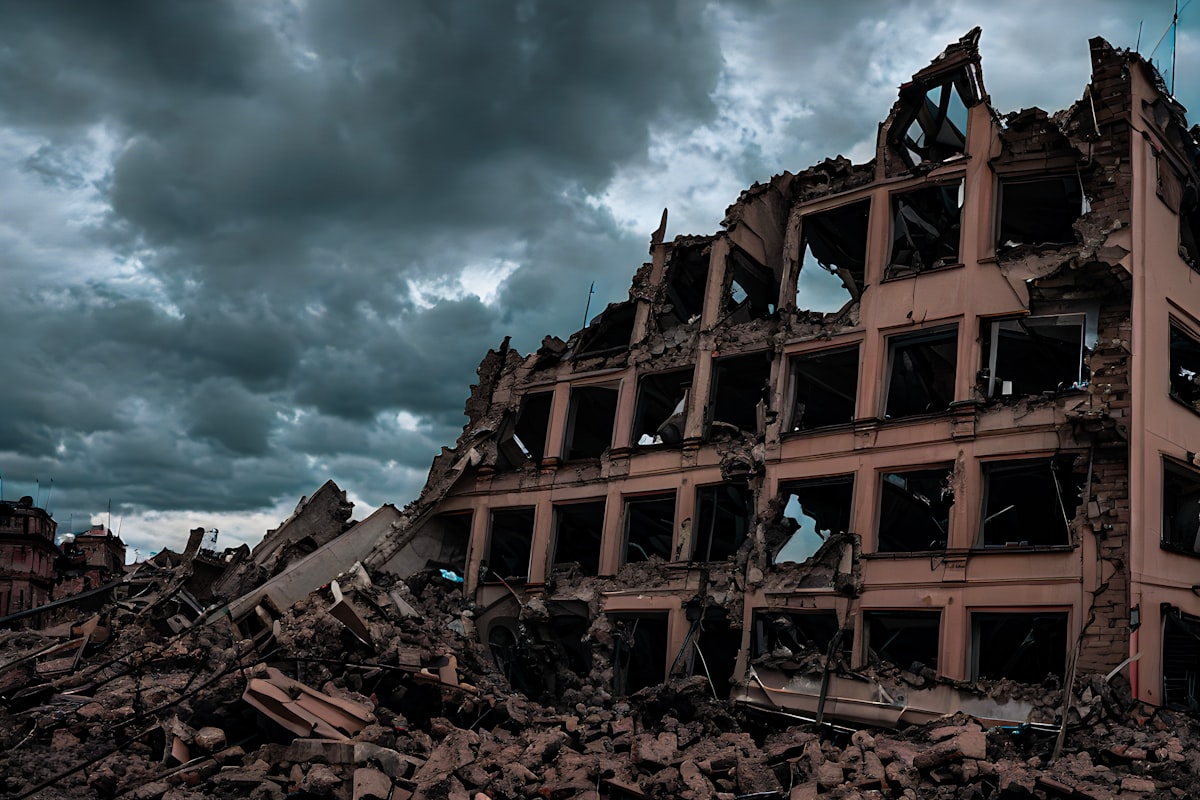
An overview of the situation
This article will overview the situation in Ukraine and give some predictions for the future.
1) Kherson
A referendum was held in Kherson from September 23rd–27th. It asked:
“Do you approve of having Kherson Oblast exit Ukraine, reforming Kherson Oblast into a self-governing state as well as incorporating it into the Russian Federation with subject rights of the Russian Federation?”
President Putin announced the annexation of Kherson on September 30th. At the time, Russia controlled virtually the entire oblast. Subsequently, the Russians pulled back from the right bank of the Dnieper. The Russians left Kherson city, but still maintain control over the majority of the Oblast, which they will certainly never give up save in the face of total military defeat from overwhelming force.
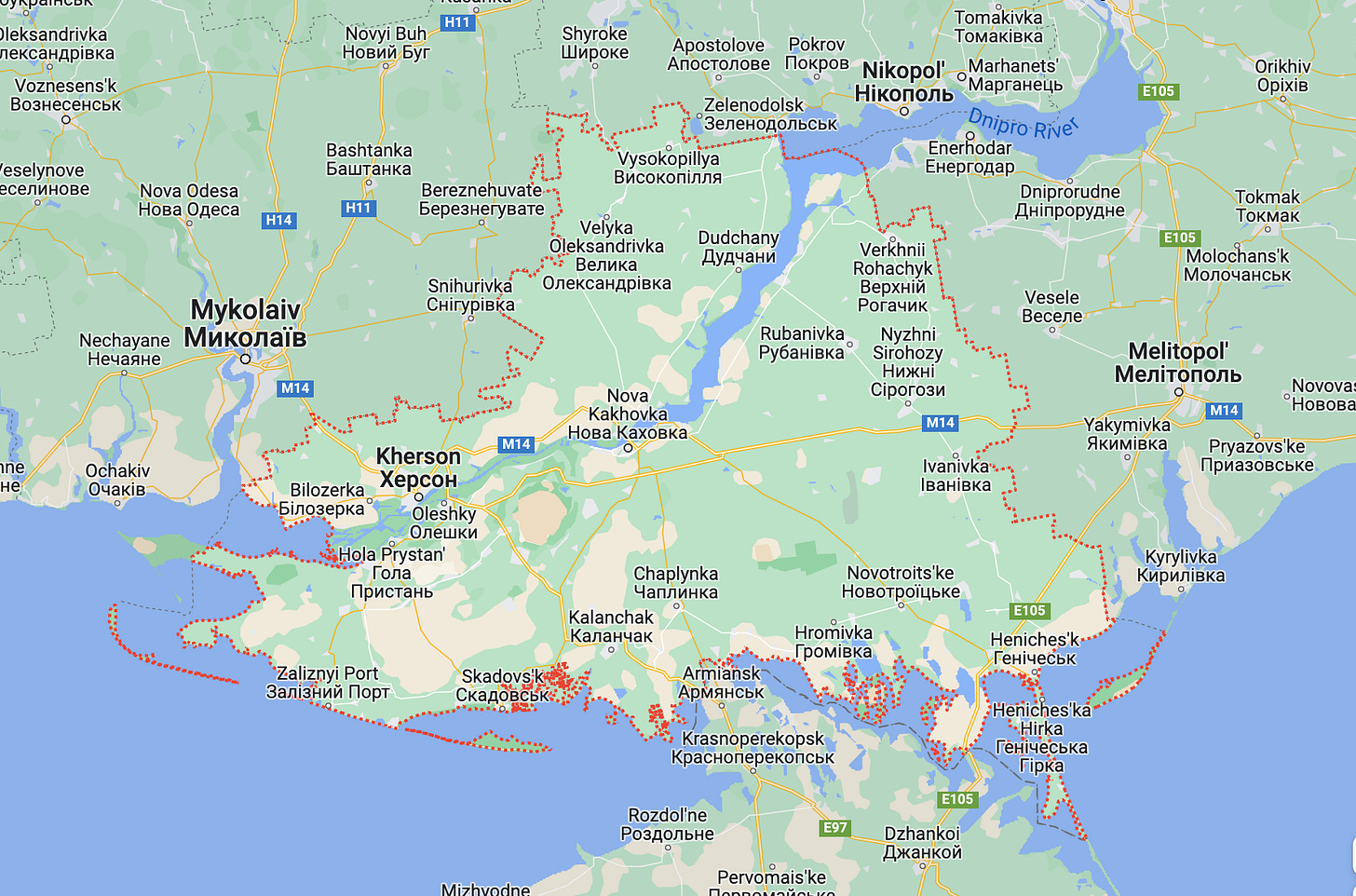
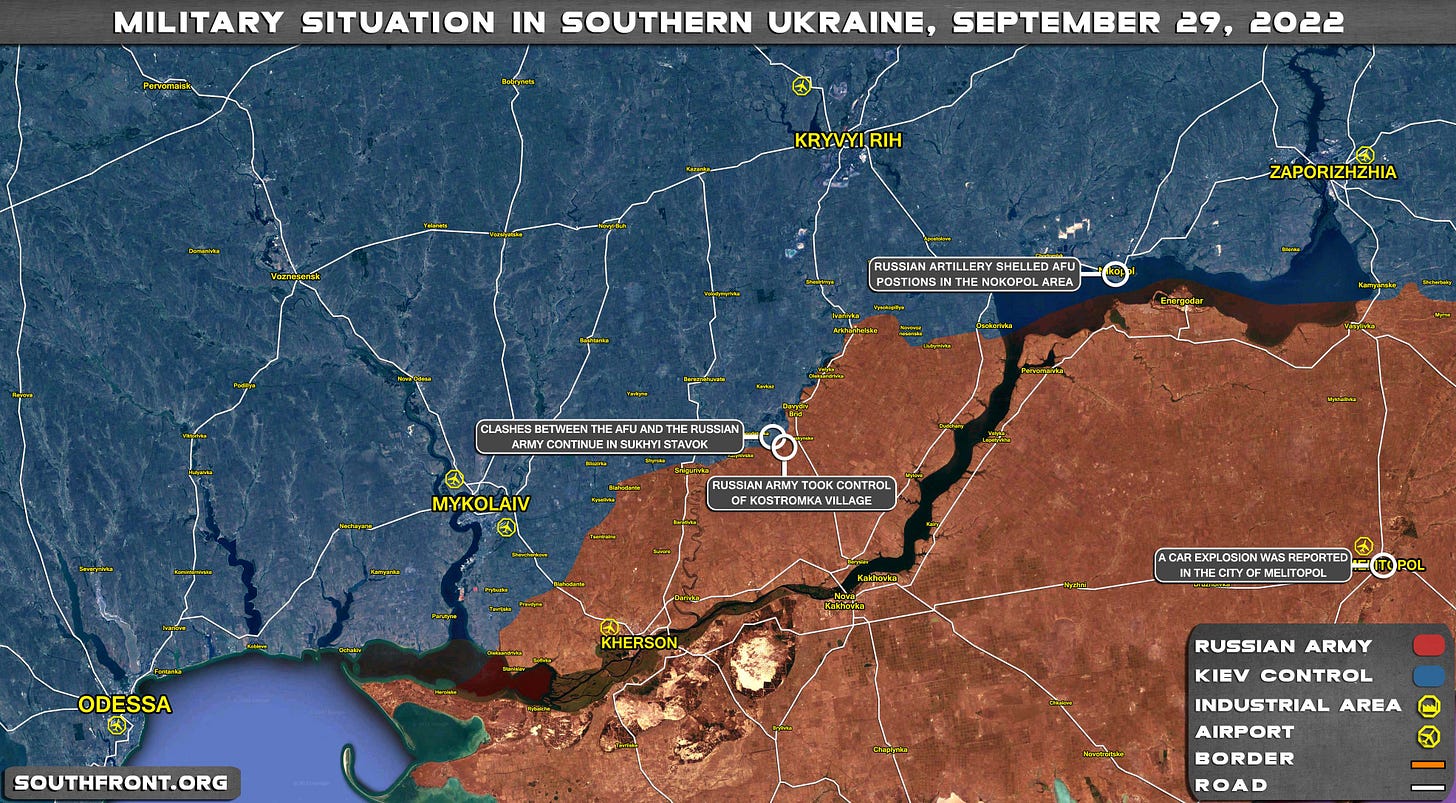
Russian achieved the strategic win of a legitimate-as-possible annexation of Kherson by capturing the region long enough to hold a referendum, and then pulling back to the most defensible line of the entire front: the banks of the Dnieper. Russia achieved a strategic advantage in this retreat, which was reportedly so well executed that the Ukrainians were hesitant to advance, believing it to be a feint, and dealt very little damage to the Russians. It might seem odd to call a retreat “advantageous,” but if a retreat creates a vastly superior position that will save men and resources that will be used elsewhere in operations of more direct strategic significance, then it is an advantageous move. It also pre-empted any possible political disaster from the Russian army from being routed. The forces in Kharkov were primarily Luhansk militiamen—not professional army soldiers. Westerners may not see or care about this, but Russians do.
My prediction for this front in 2023 is that the Kherson front will not change at all. Russia will maintain this line while operations in Luhansk, Donetsk, and Zhaporizhzhia continue.
2) Kharkov
The Ukrainian offensive in Kharkov was successful and well-executed. The offensive did not stop at the Oskol River, but continued on into Luhansk and Donetsk.
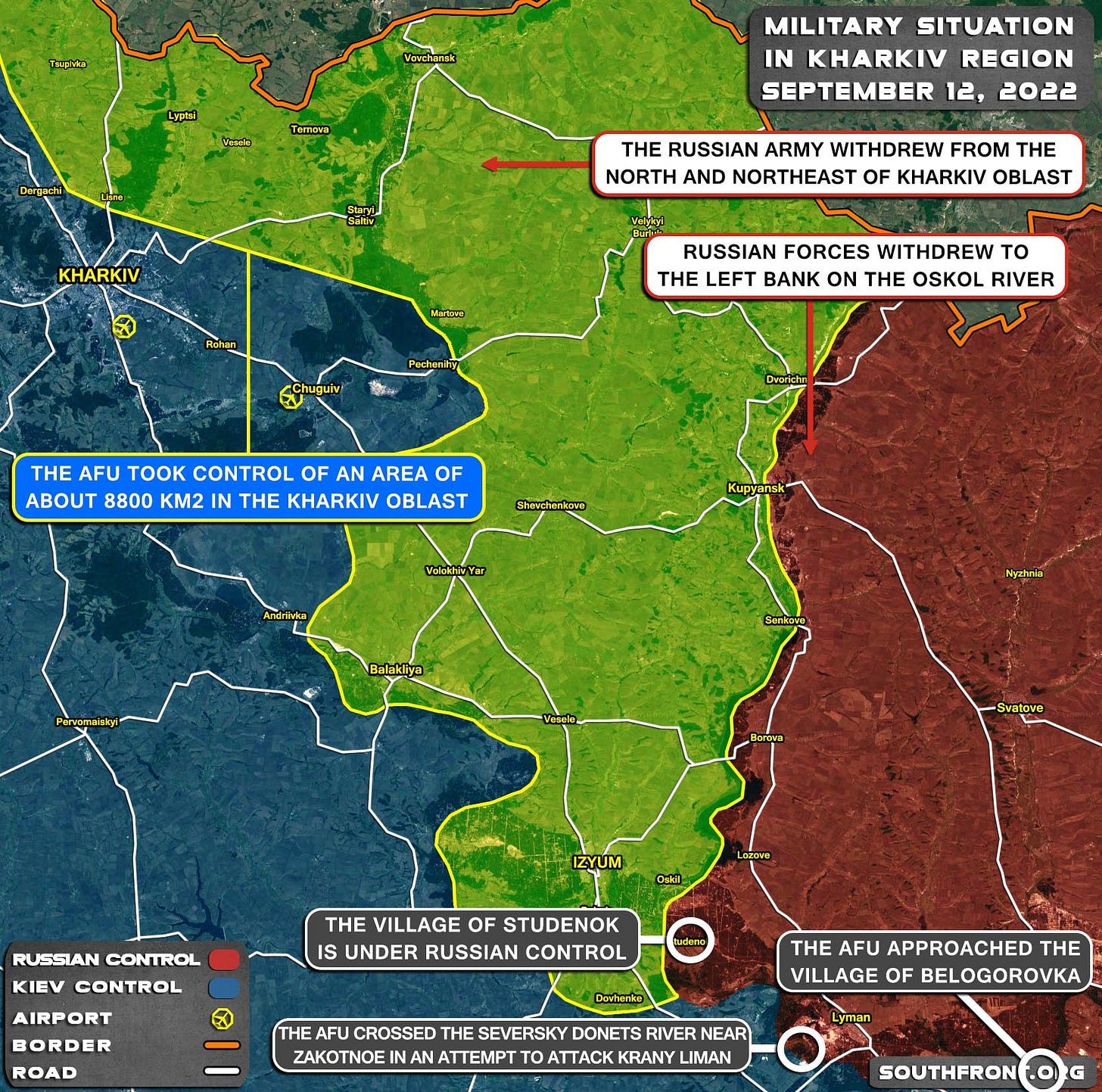
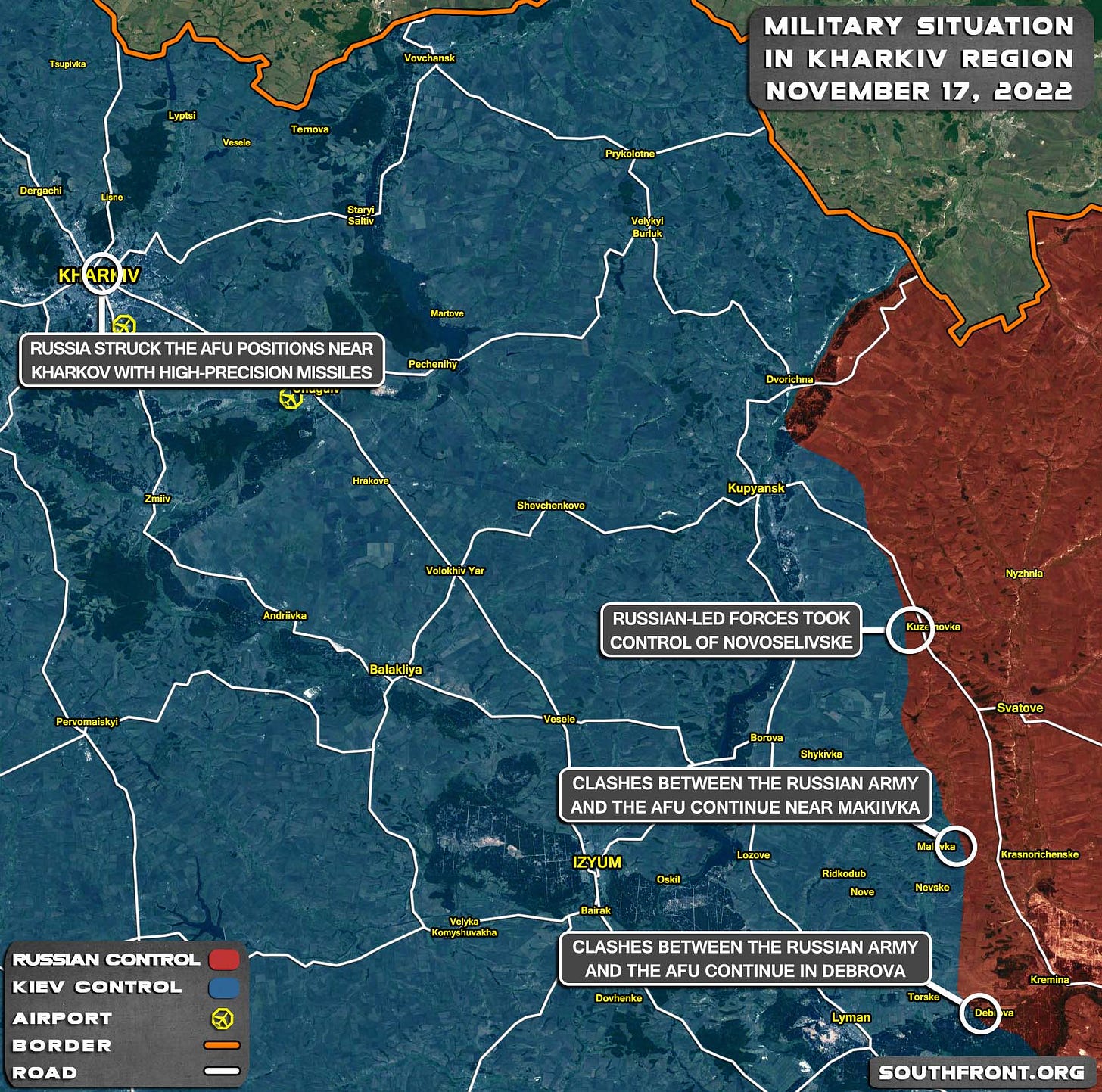
The offensive was not merely a much-needed morale victory for Ukraine, but also served a specific strategic objective. The front froze at the exact place necessary for this to happen. Any offensive has multiple goals depending on level of success—and the seizure of Lyman is the biggest success the Ukrainians achieved. Russia ultimately seems to have no intention of annexing Kharkov at this point, so kicking them out was ultimately pointless as a military objective. Lyman, however, is in Donetsk, and Lyman is of critical importance for Russia to be able to attack the largest cities under Ukrainian control in Donetsk. Additionally, the exception to what I just said about Kharkov is Izyum, in Kharkov. This city/town is also critical for Russia to be able to take Slavyansk.
Russia’s strategy in the war is to progressively encircle cities and then grind them down once they are cut off from outside supplies. Ukraine’s strategy is to fight in them to the last man. While brutal, it is effective in making it take as long as it possibly can for Russia to gain ground, giving time for other defensive lines to be fortified. There has been very little movement on some fronts for the entire duration of the war, and this is because eight years were spent fortifying these positions on both sides.
Here is a topographic map of Slavyansk and the surrounding area. If the map is confusing, here’s a latinized view of the area to help:
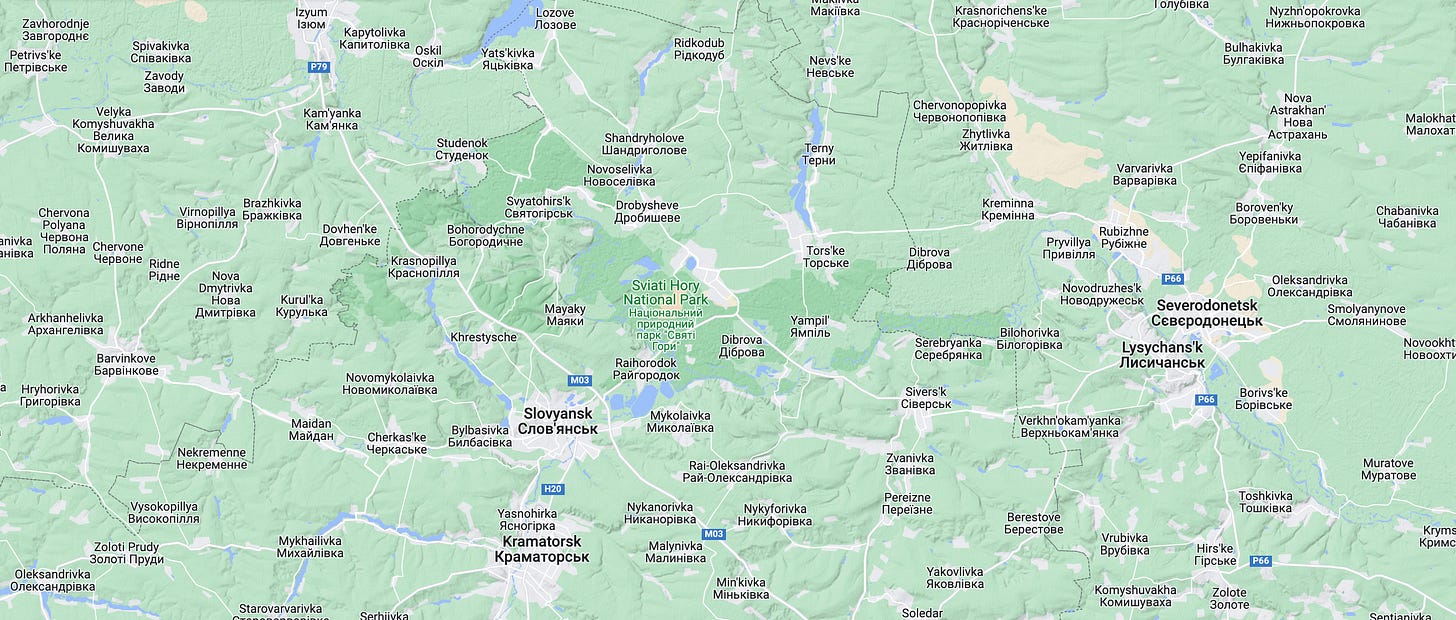

As we can see, Slavyansk can be supplied by a road from its northwest (M03) that travels through terrain several hundred feet higher than the Slavyansk itself, only a few miles away. I live on terrain with a similar incline gradient, and I can tell you that assaulting that highway, which runs across the highest points in the area, would be difficult. Especially because it is flanked to the east by a river with killing fields and to the west by deep Ukrainian territory. Here’s a small part of the terrain.
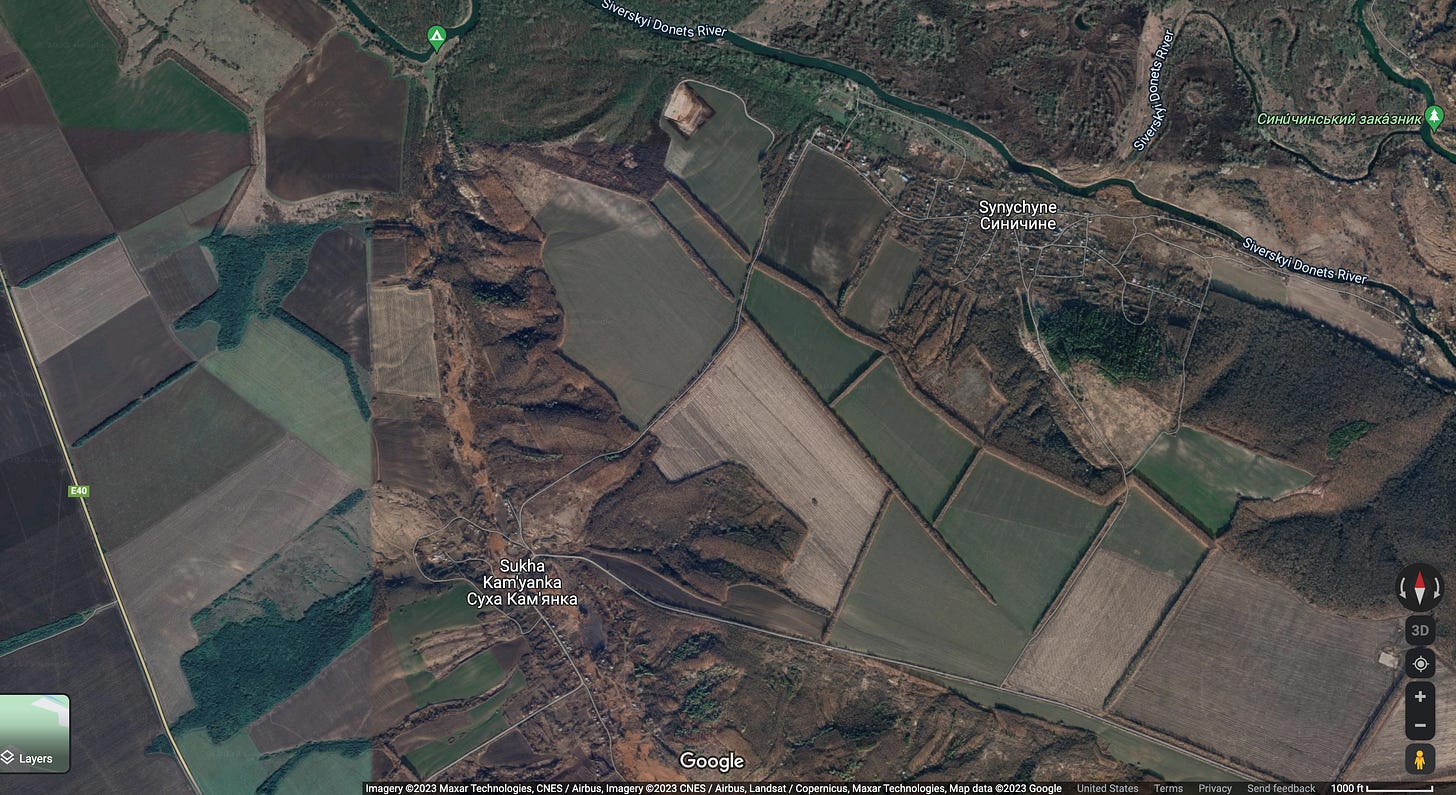
Yeah. That ain’t happening. The way through is via Izyum. A place the Russians held, until the Ukrainians kicked them out. Likewise, they were kicked out of Lyman, which would be necessary to cut Slavyansk off from the northeast. Both will likely have to be taken back before Slavyansk can be captured. Ukraine taking these territories back gave it a very strong defensive line of cities behind Bakhmut, should it be taken. Speaking of Bakhmut….
3) Bakhmut
Russia is slowly enveloping the city/town of Bakhmut in Donetsk. This battle has been going on for months. Estimates put the opposing forces of both sides within multiples of ten thousand. To the extent there is a sustained war going on in Ukraine, this is where it is happening. While the Ukrainian offensives were happening in Kherson and Kharkov, both sides were still grinding away at each other, and still are.
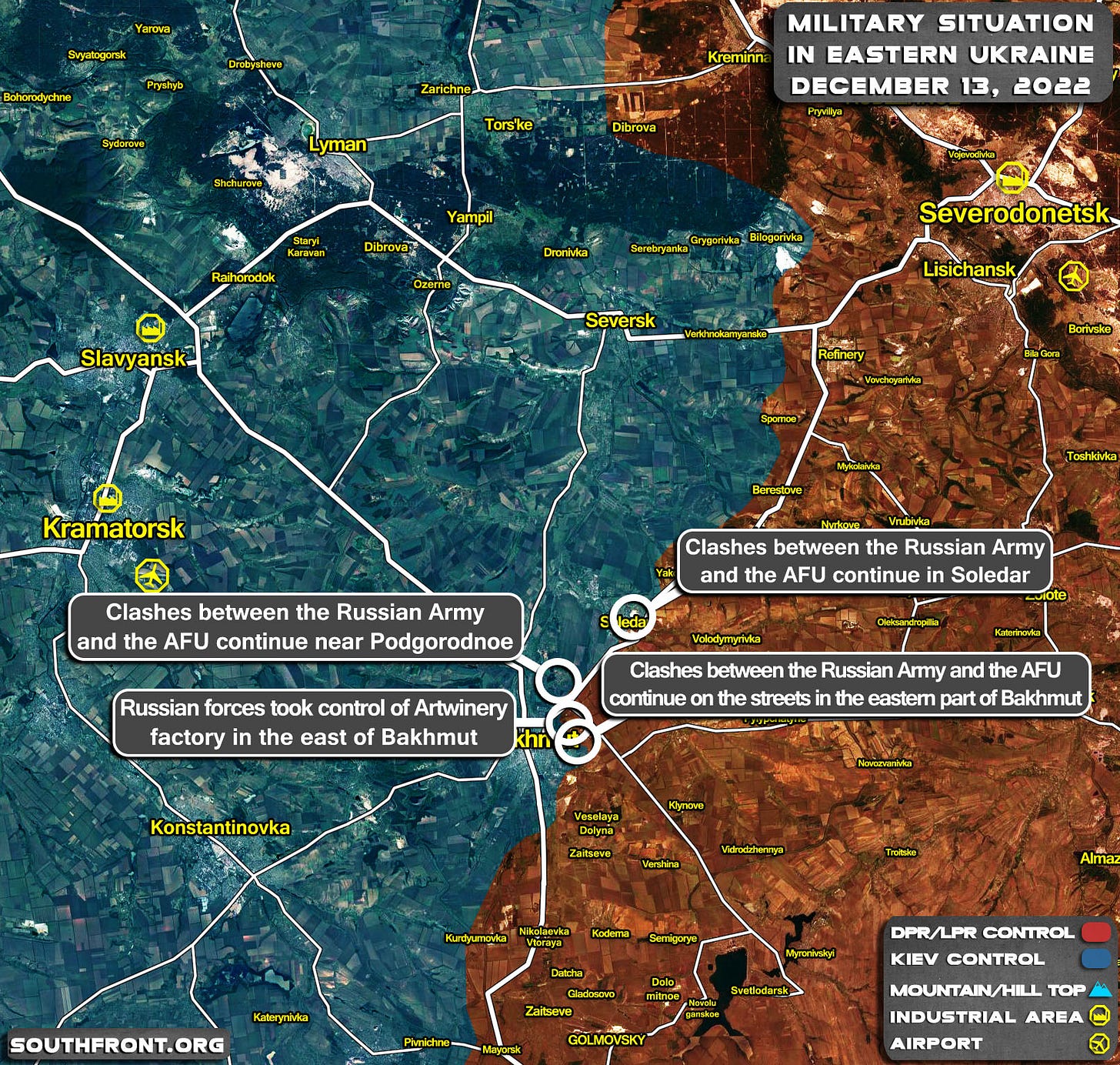
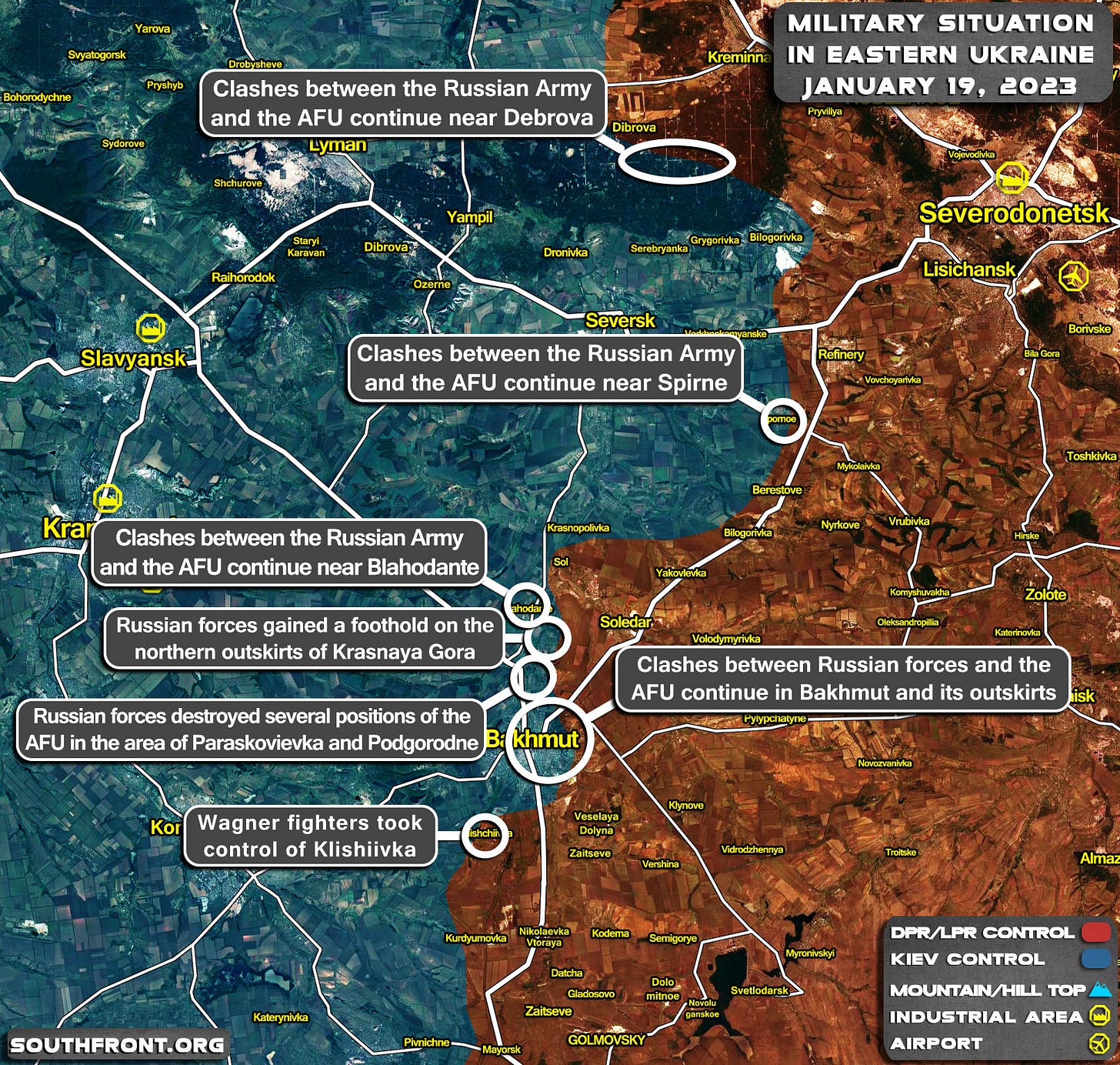
Over the past five weeks, Russia has made significant advances around Bakhmut. In the south, they have captured the suburbs of Klishchiivka. It’s just a few streets, but it illustrates the importance of terrain very well. Note the topography maps along with the satellite picture below. Study the maps above to keep track of these locations.
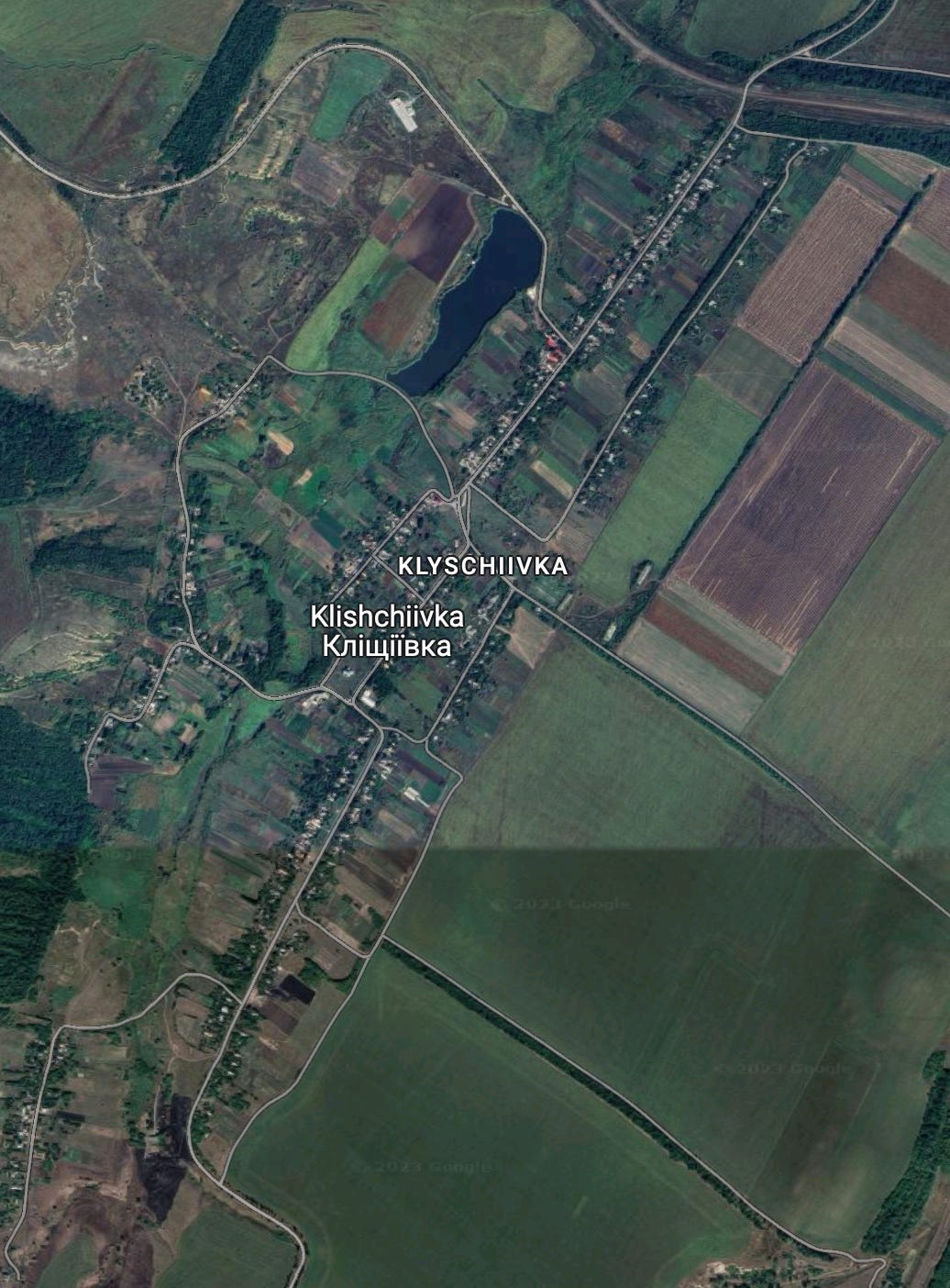
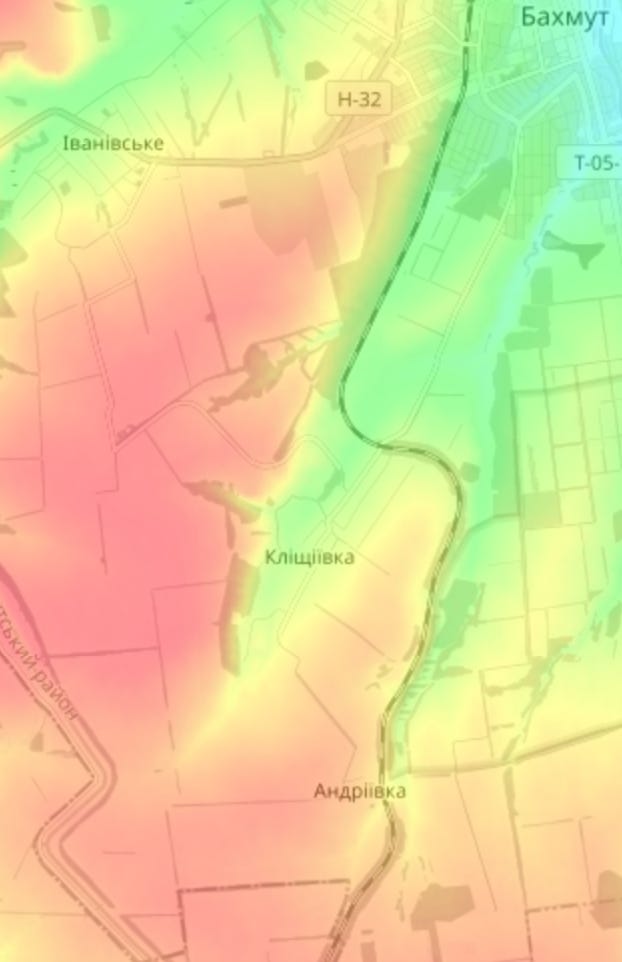
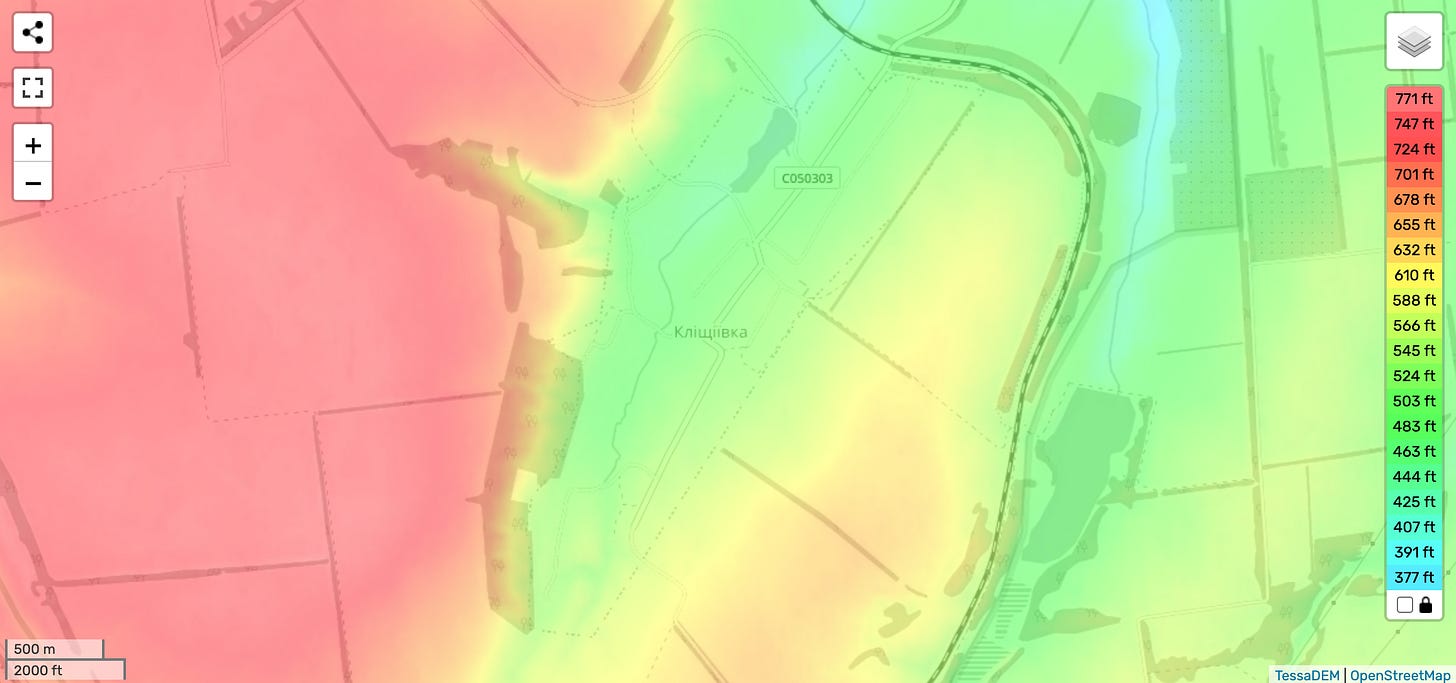
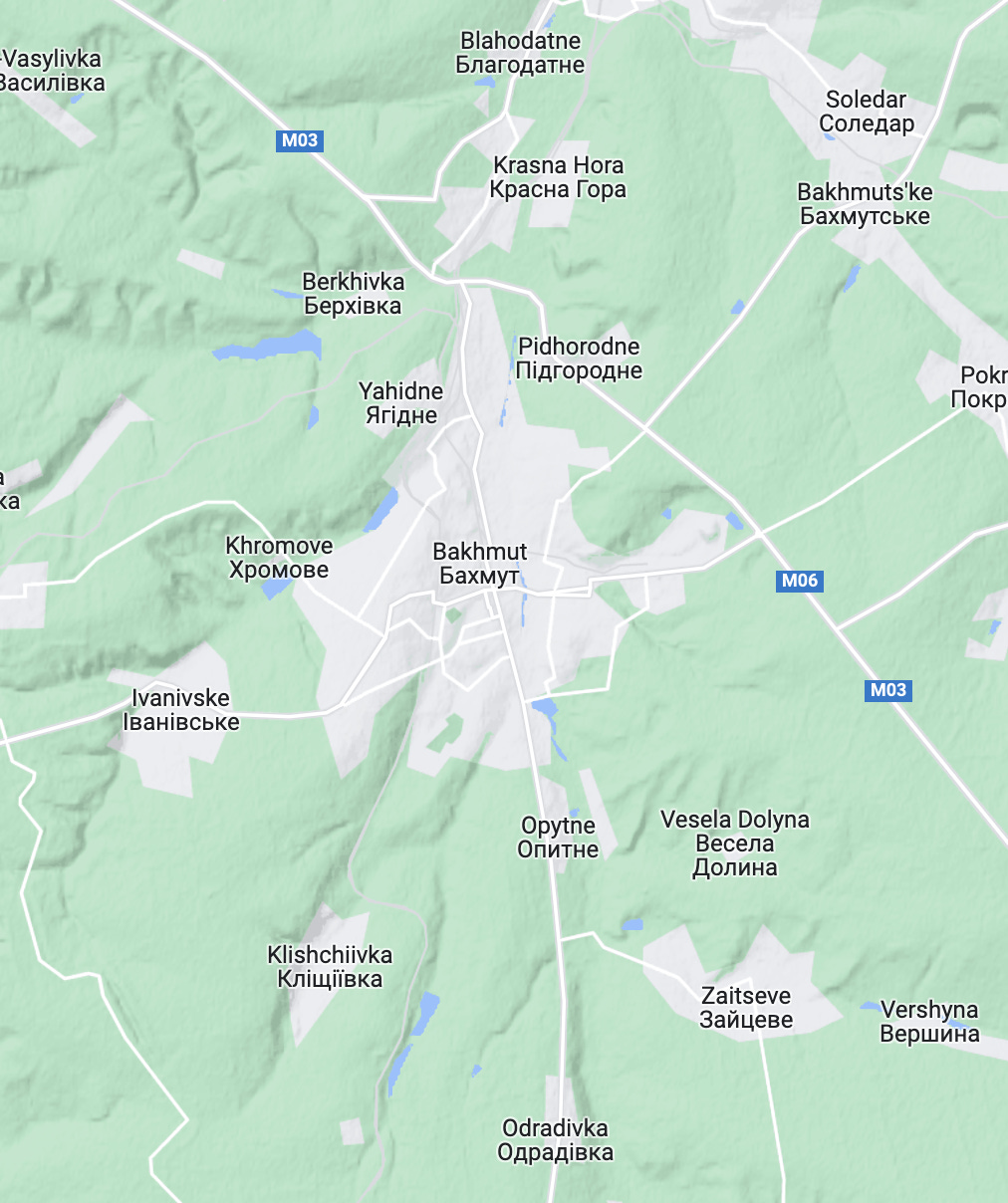
If you look at the territory claimed to be under Russian control by the above map, it basically maps to that ridge west of Klishchiivka.
Now that I’ve gotten that map autism out of my system, the more important gains are in the north, around Soledar. The “Salt Mines” have been hyped up for their economic value, but they are a serious strategic objective for both sides. The mines are a massive underground complex that can be used as a staging area for equipment.
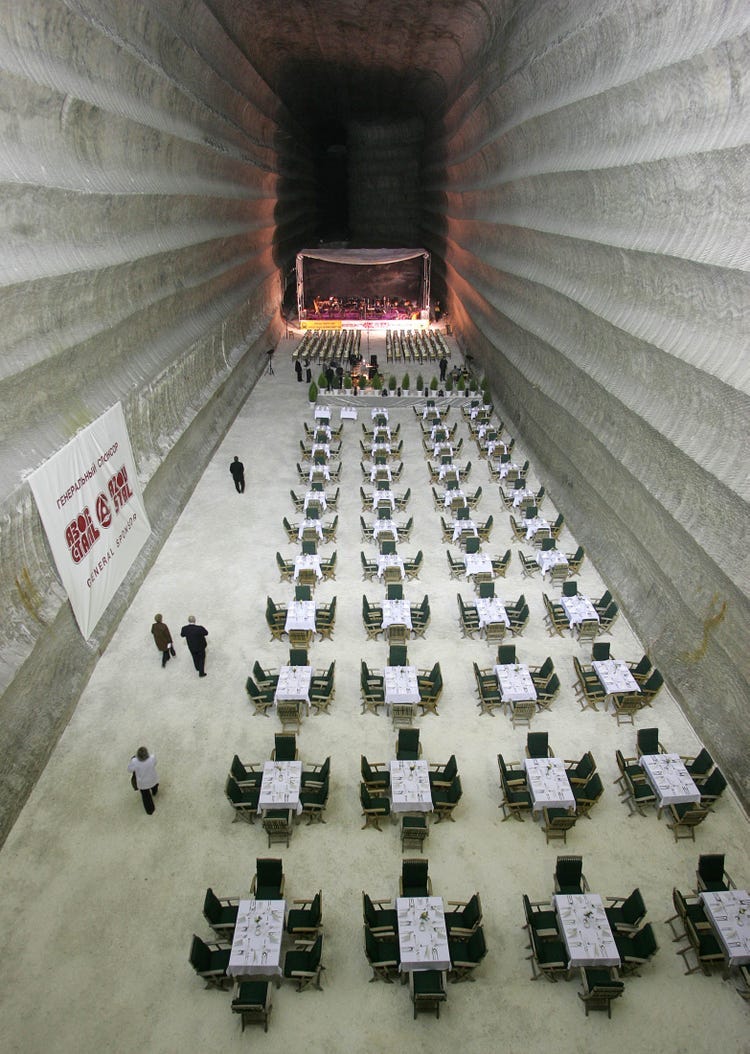
These are not your great-great-grandfather’s mines. The mines can fit within them hidden and protected arms and soldiers for use to stage attacks in other parts on Donetsk. Bakhmut has the potential to serve as a major operations hub for Russia.
If you scroll back up to the war map, you can see that Russia is close to taking he highway that connects Bakhmut to Seversk, but, before we move on to other areas, let’s take a final look at Bakhmut.
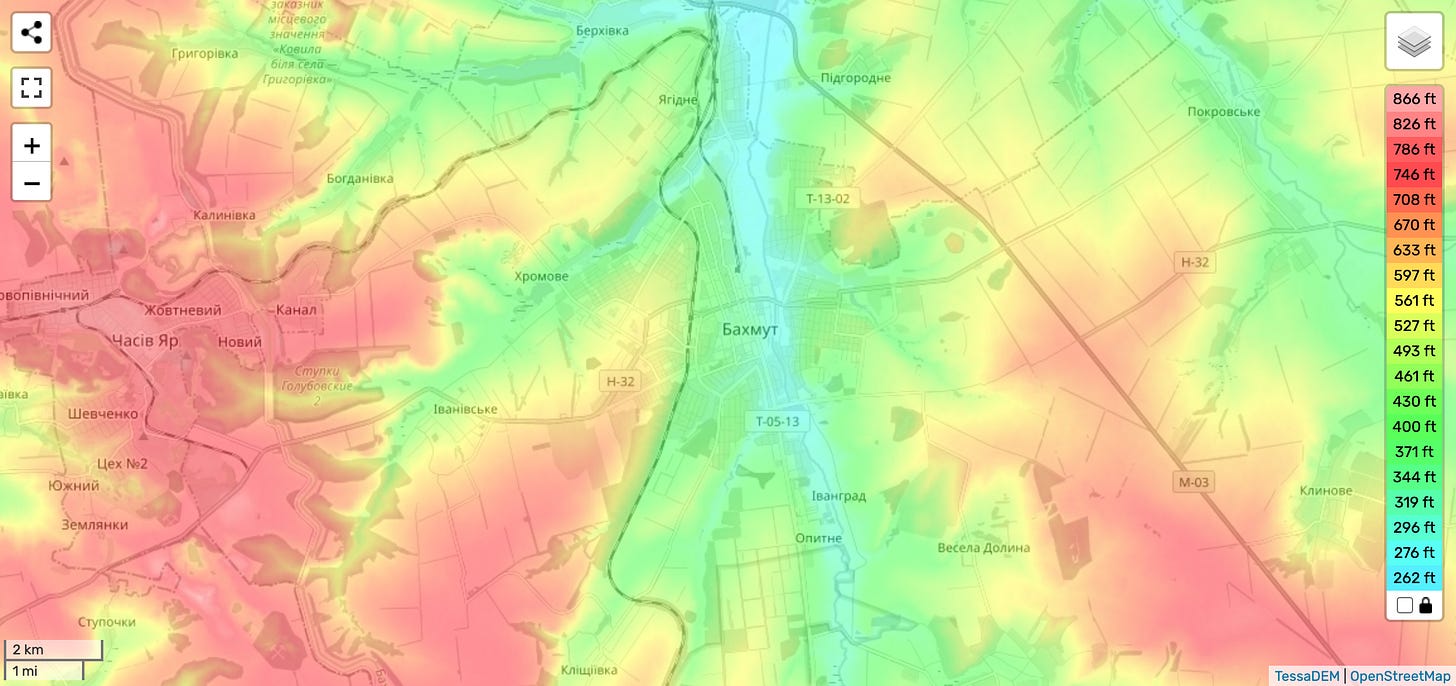
The terrain in the west is a bit tricky, but not insurmountable. Ivanivske is the next suburb after Klishchiivka, on the H-32 highway in the map. Scroll up if you need to reference the latinized names again. If Russia moves up on the heights west of Klishchiivka, they will have a terrain advantage. Ivanivske is on roughly even terrain with Khromove, which you can see labeled on the map west of Bakhmut center.
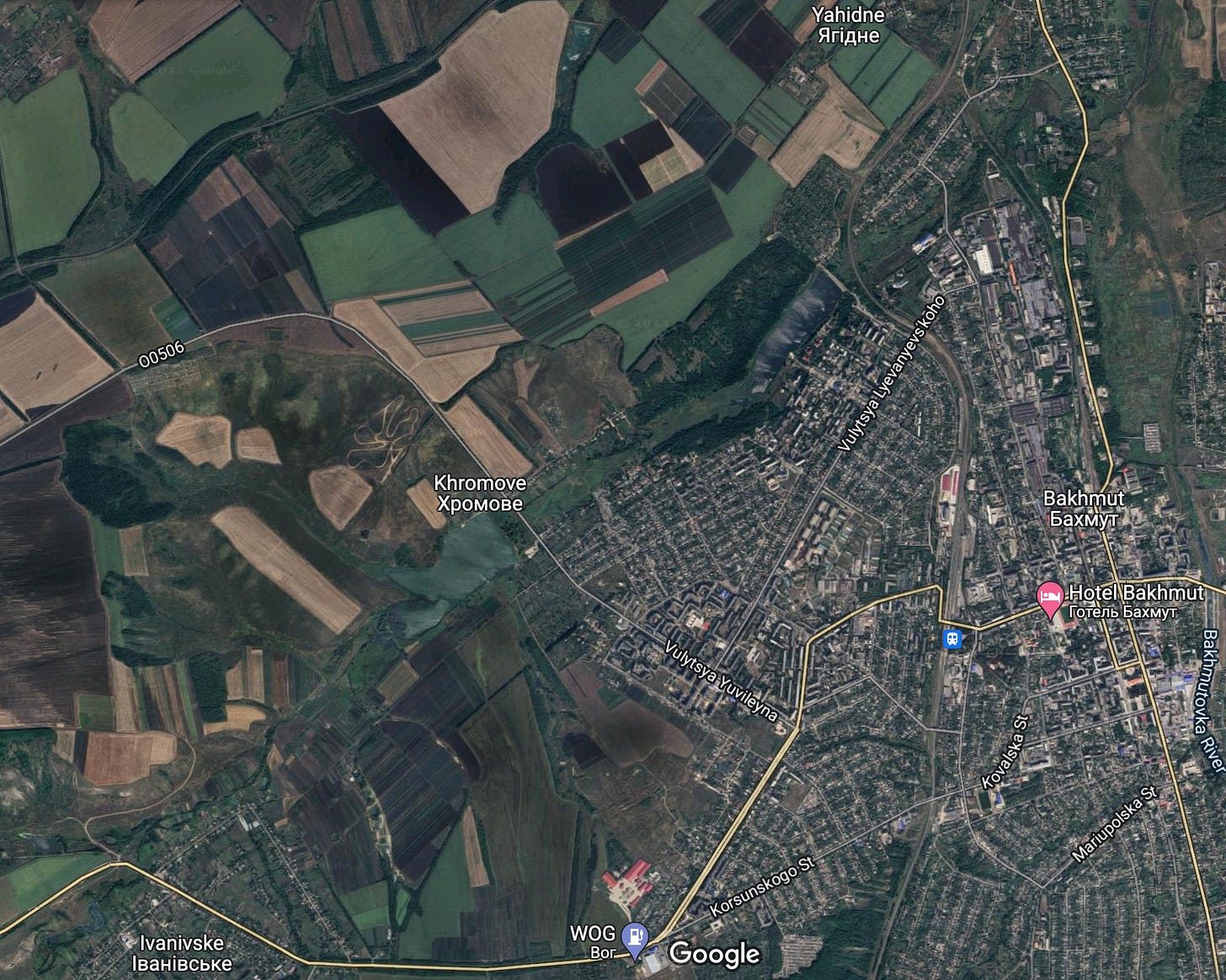
Here it is, and as you can see, it’s just more suburbs that happen to be sitting on another road into Bakhmut. This smaller road effectively means that Russia will have to achieve a full encirclement to properly cut off Bakhmut from the rest of Ukraine. Khromove is about two miles from Ivanivske, so the road could certainly still be used if the Russians took control of Ivanivske.
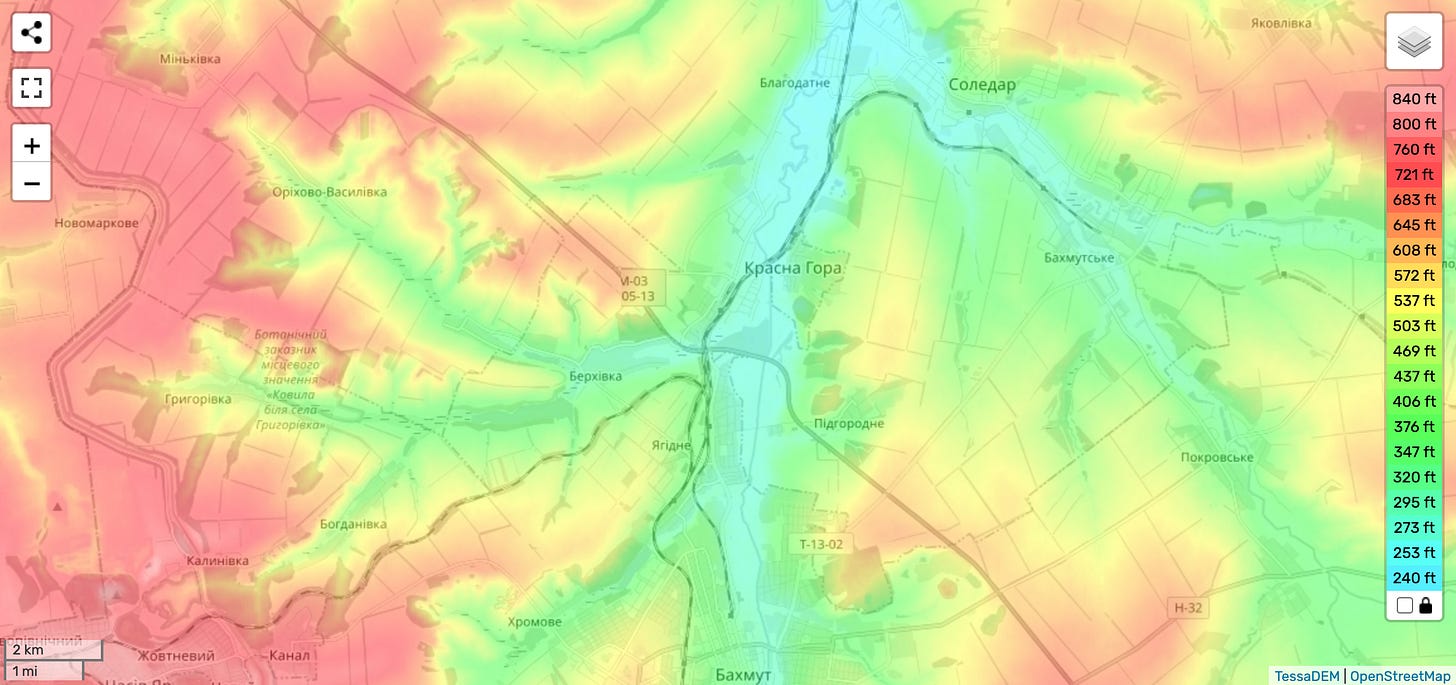
In the north, the terrain is similarly advantageous to the defender of the M-03 highway, but not insurmountable.
I expect it will be another several more months before Russia can actually achieve an encirclement, although that may accelerate. As the city is progressively encircled, the city’s front extends while the avenues for resupply are diminished, which may accelerate Bakhmut’s collapse. The two highways (H-32 and M-03) and that smaller road to the west of Bakhmut are of critical importance. The roads Russia has taken so far have probably been of little detriment to logistics.
Okay well that was another bout of map autism but… oh, who am I kidding, it’s all maps. Let’s look at more maps. Here is the broad Donbass front, as it progressed from around the time of annexation to about now.
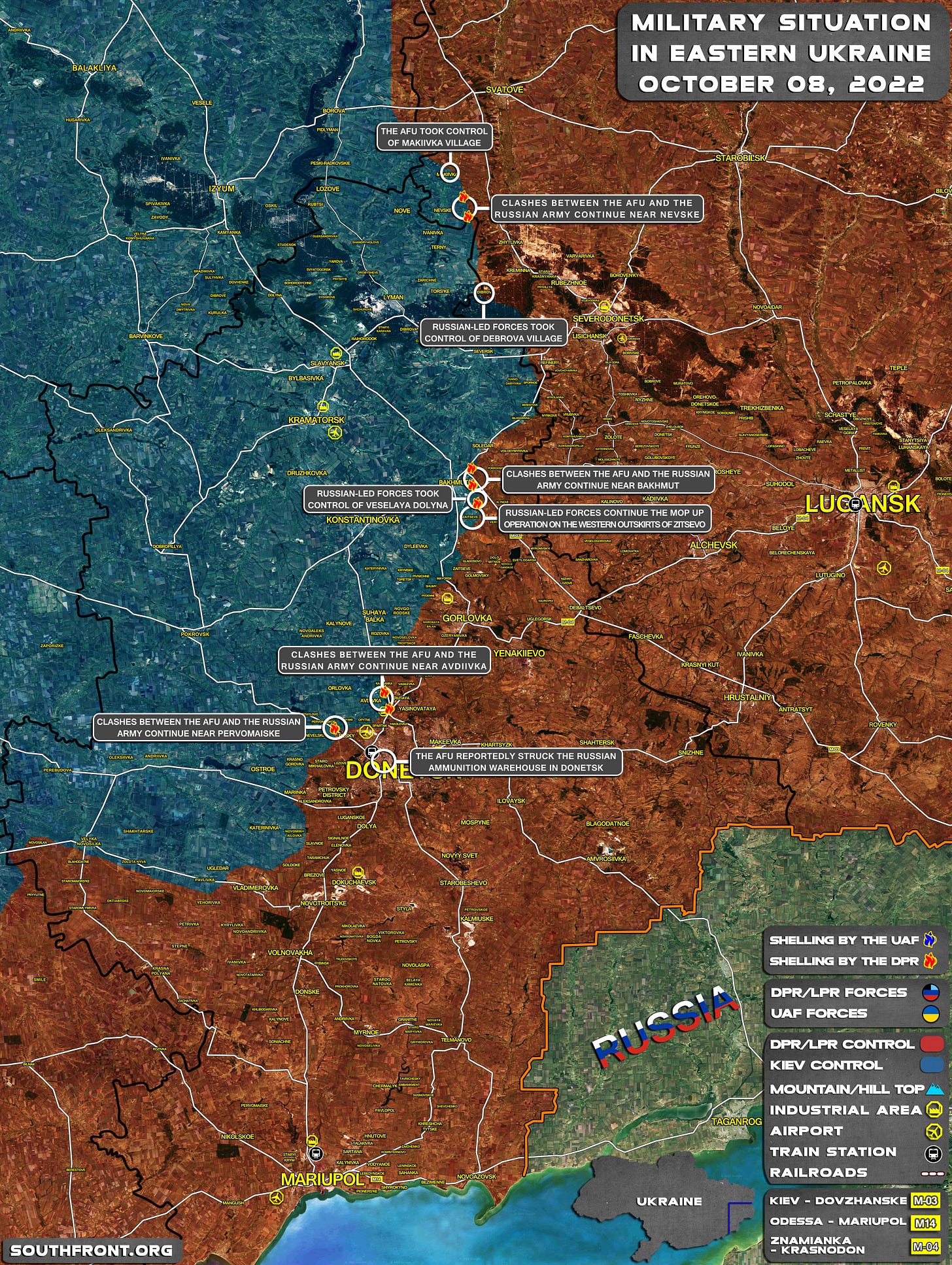
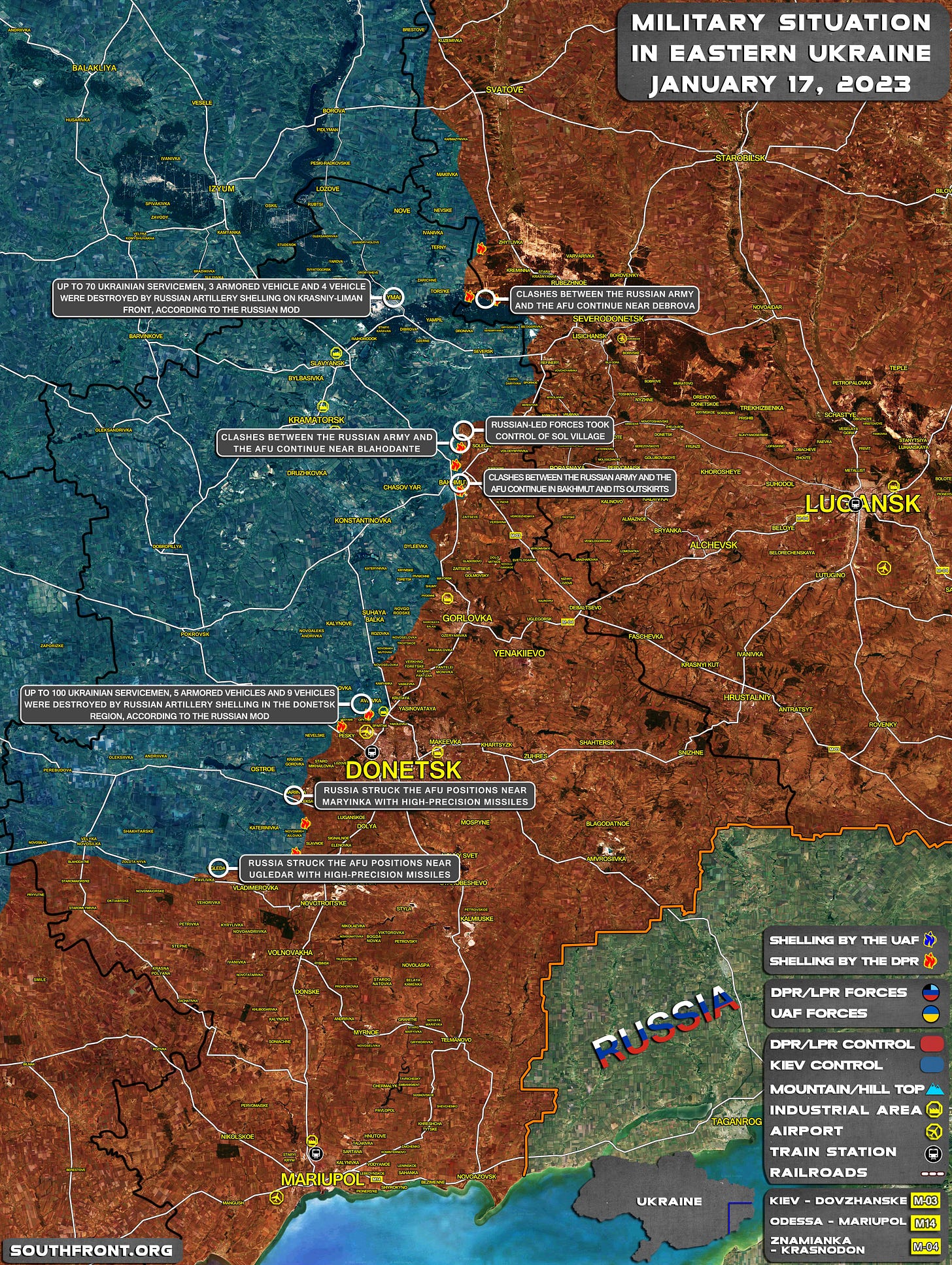
Broadly, we can see that the Kharkov front has stabilized, with some strategic losses for Russia, as we covered. In the southwest, we can see minor variation. Around Donetsk city, we can see scarcely any movement, due to the long-standing fortifications I mentioned earlier. There is some movement, however, and this is important, because Russia must proceed through this territory to “get behind” Konstantinovka. Here’s a map with big red arrows on it in case you aren’t quite seeing it:
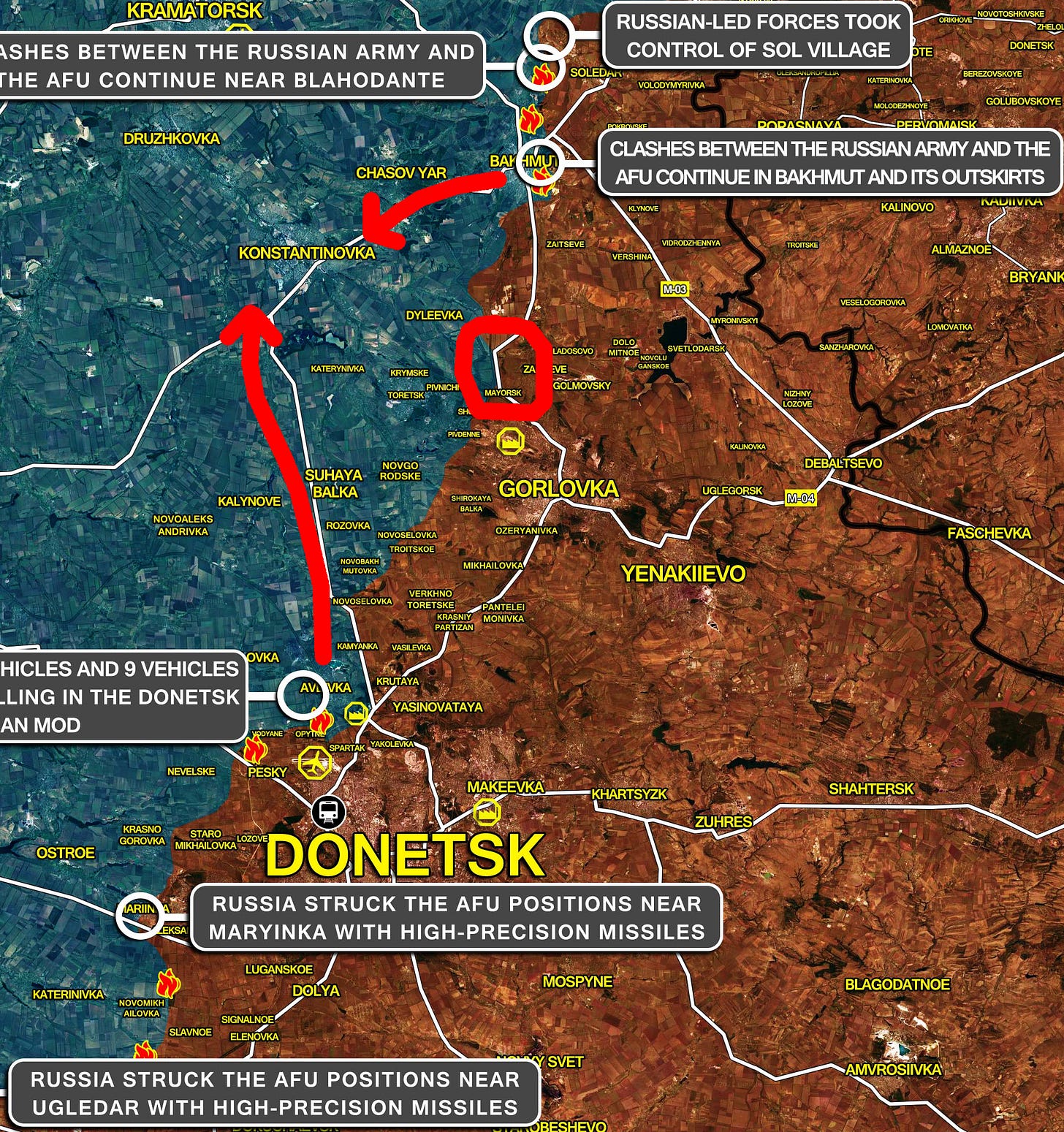
I’ve also circled a little bit of road. Russia is very close to being able to relatively safely supply the southern front of Bakhmut through this route, which will likely accelerate their advances there. Note how this are of the map has changed.
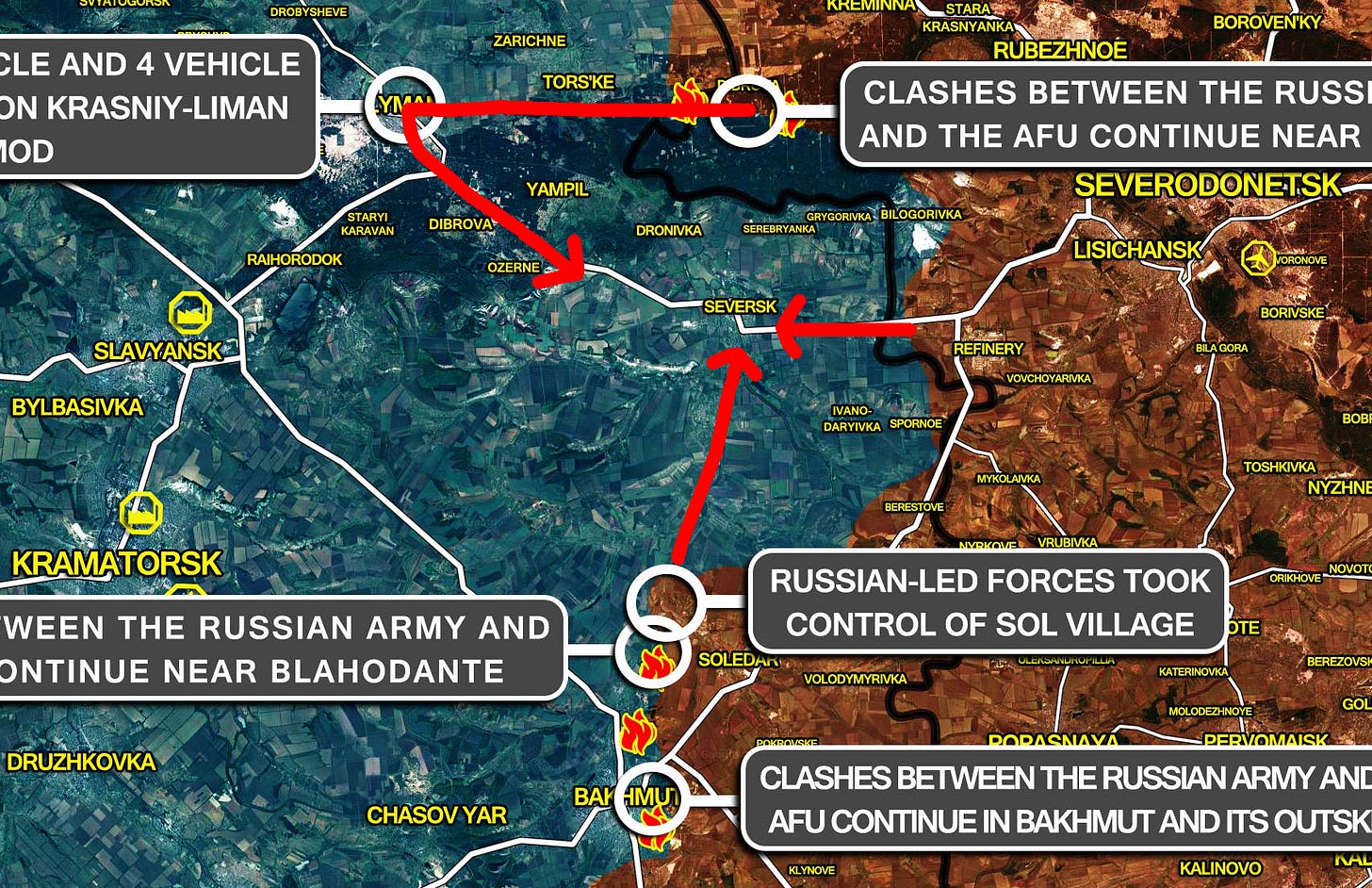
We can also see a larger encirclement forming around Seversk—however, due to the Siversky-Donets river, the Russians would once again have to take Lyman in order to really pull this off. We again see the high value for the Ukrainians in retaking Lyman. I doubt we will see the Russians attempt a maneuver like this before Bakhmut is encircled. Here are the mid-term strategic maneuvers I see the Russians roughly following for 2023. The red lines represent possible but optimistic fronts. The yellow lines represent the next steps that would be taken, potentially this year but not likely, and the green arrows the advances toward the main objectives of Kramatorsk and Slavyansk. Green arrows are “insanely optimistic” for 2023. Likely, all of these maneuvers will be executed before 2025, however. If Russia can take the line of cities from Konstantinovka to Slavyansk, the campaign in Donetsk will be effectively won.
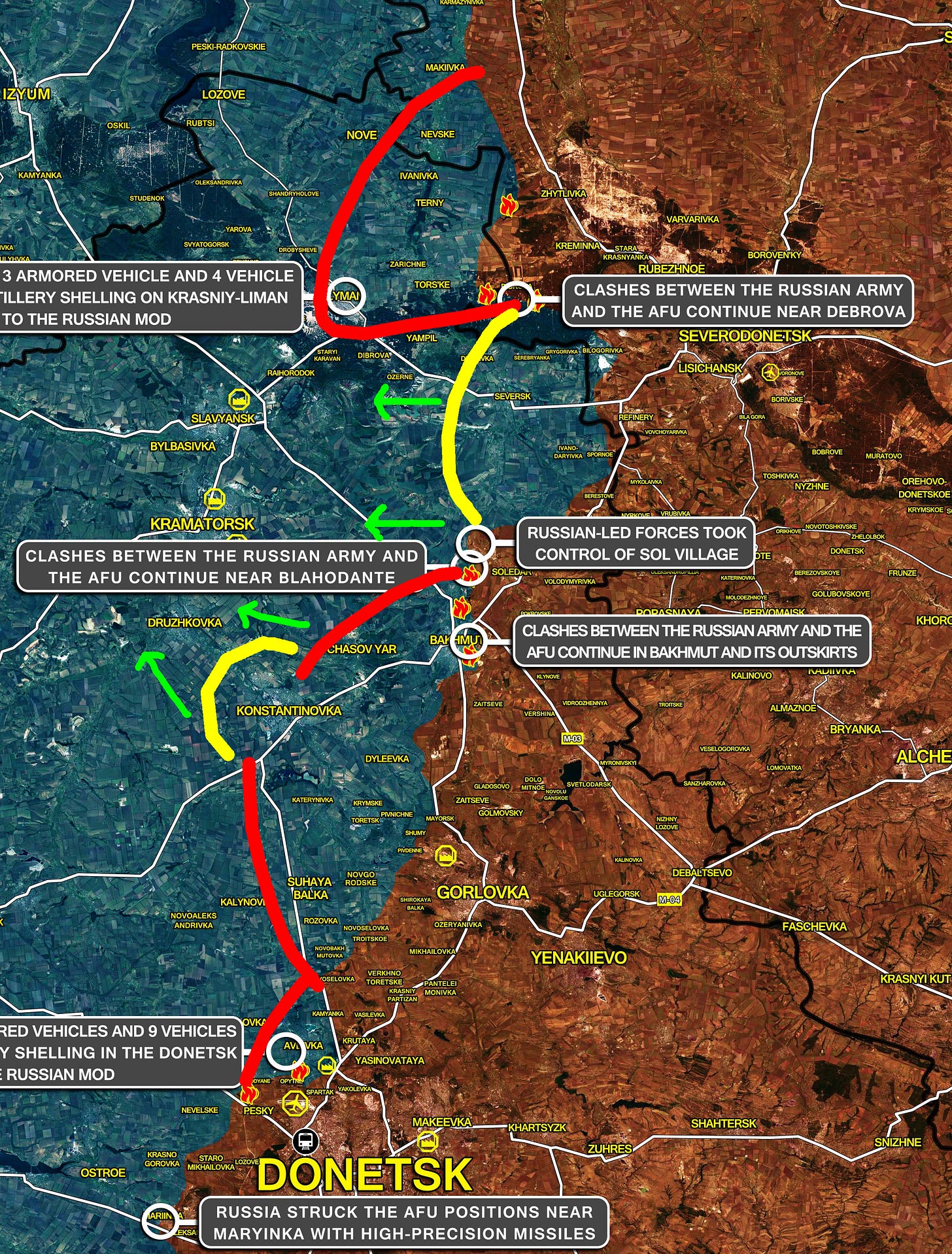
On the other hand, Ukraine’s most devastating move would be to attack a city like Melitopol, or attempt any advance that would cut off Crimea from the rest of Russia. This attack would likely rapidly collapse the Kherson front and see Russia retreat to Crimea.
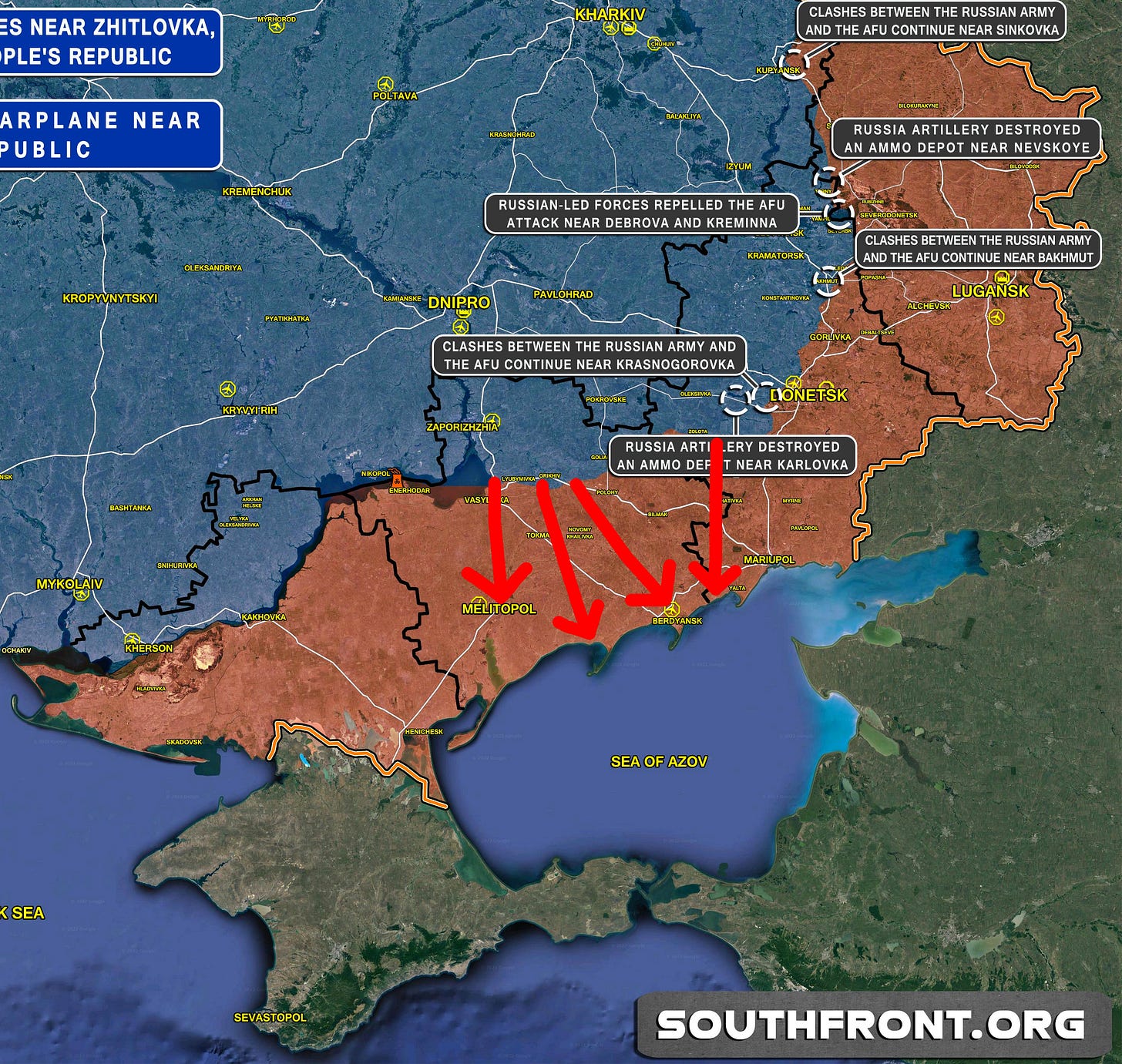
However, I think the phase of the war where we see these massive advances is over. Russia has bitten off a huge chunk of the Ukraine, and the Ukrainians have demonstrated their own offensive capabilities. The Russians are certainly aware of this risk as well, which will no doubt be mitigated by the additional soldiers being mobilized, and the retreat across the Dnieper. The terrain tends to favor Russia here as well.
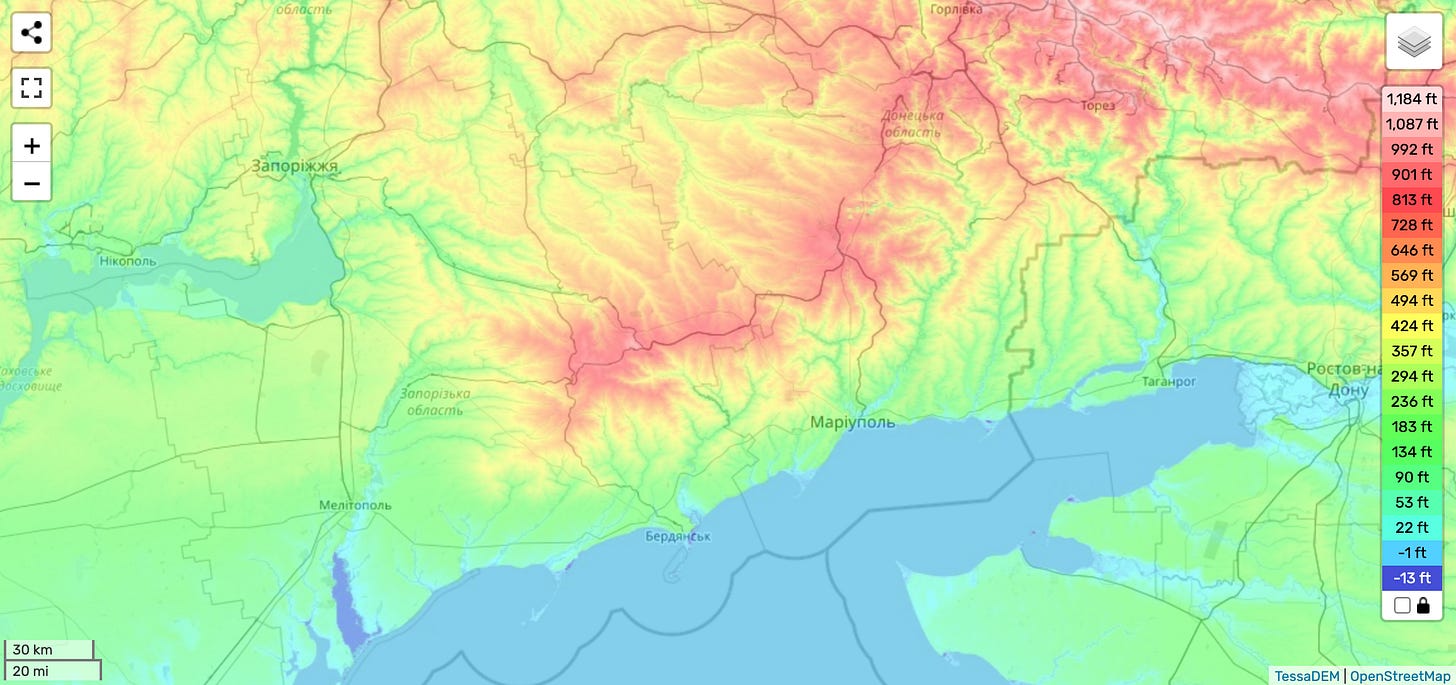
We should also take this moment to talk about the Dnieper again. The Dnieper is huge. The Mississippi River, around New Orleans, is around half a mile wide. The Dnieper is a staggering two miles or more wide for much of its length, and is more like a lake near Zhaporizhzhia city. I’ve added a few mile markers in various places in the map below.
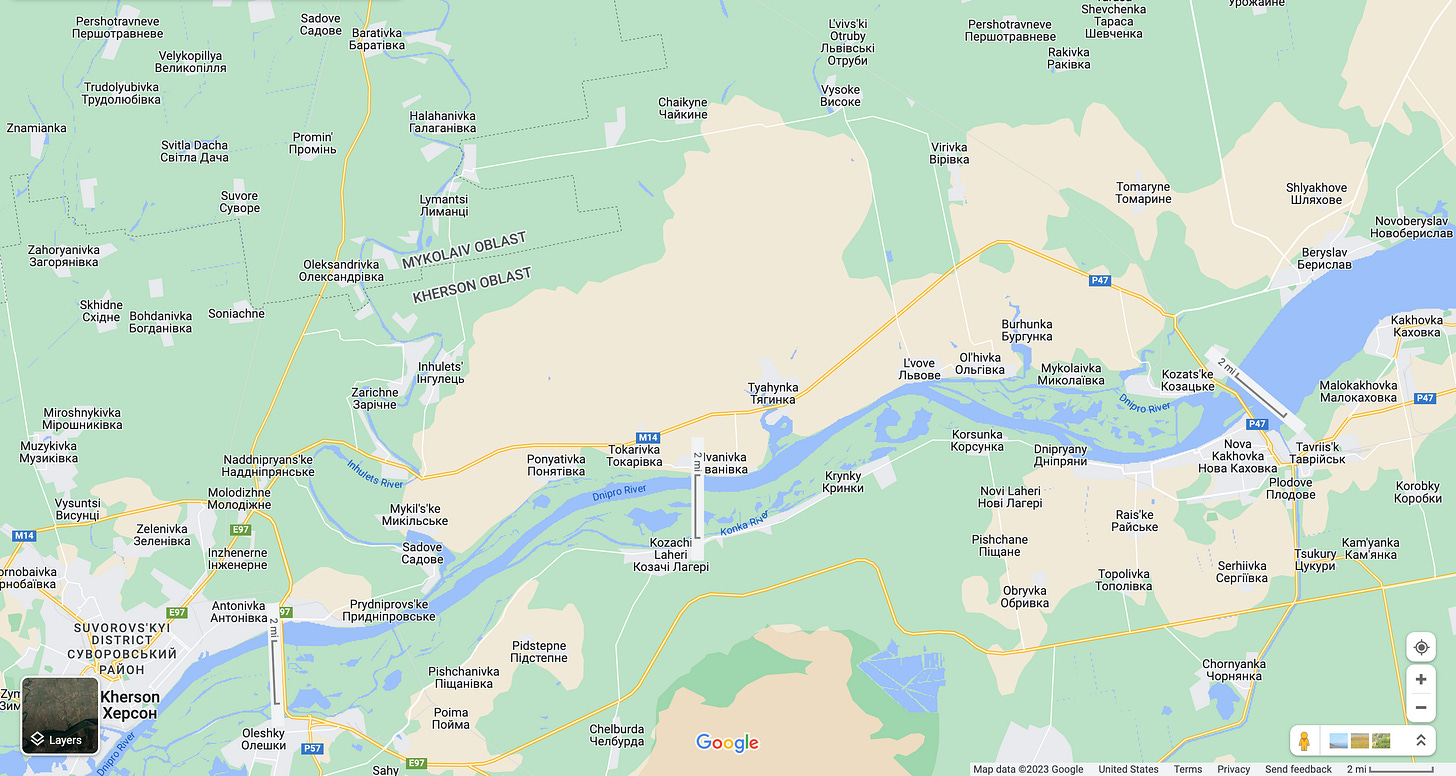
It is not a river across which an amphibious assault can easily be made. And the Ukrainian military had only two amphibious craft: the Ondatra-class, which is of this type:
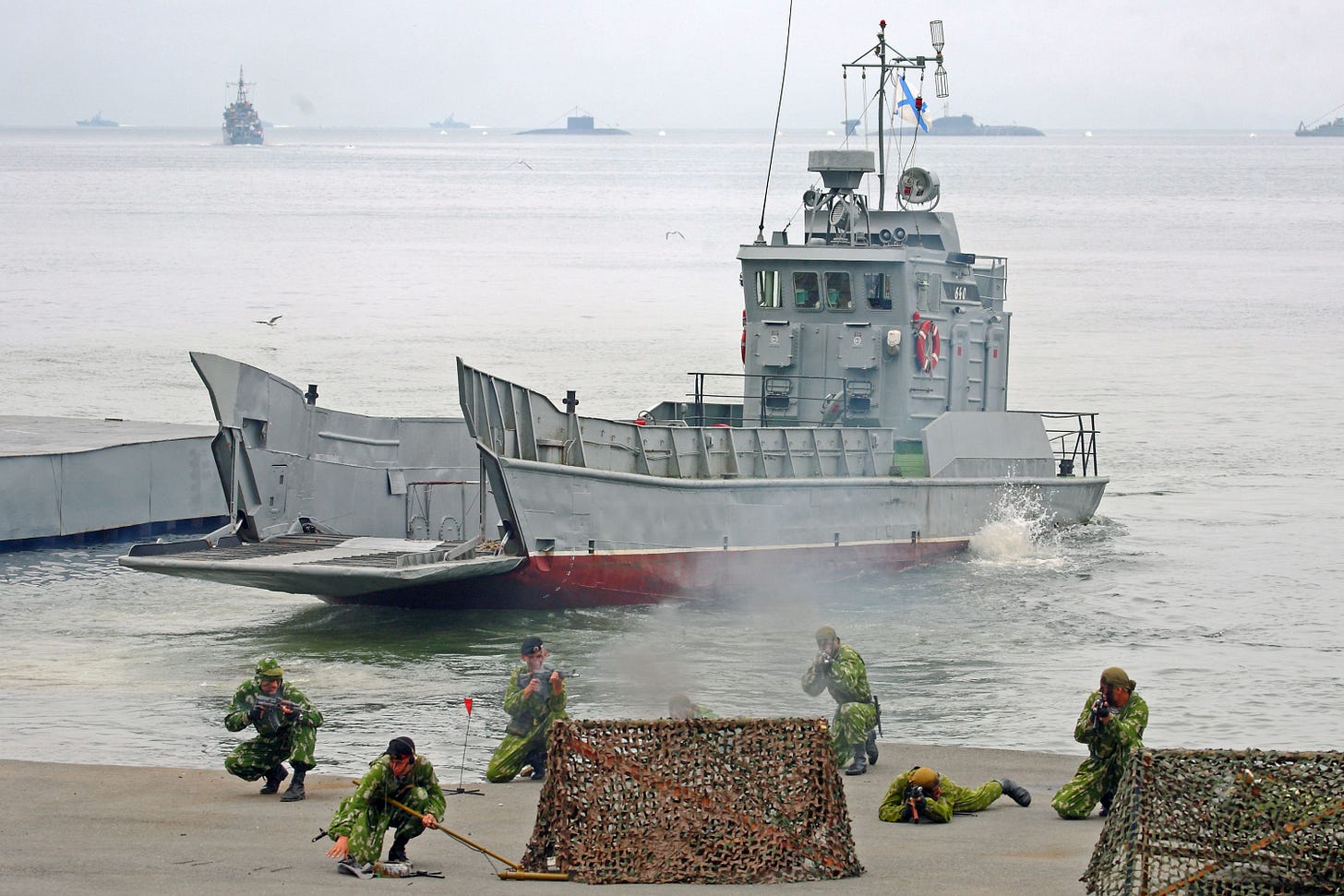
And more importantly, the Yuri Olefirenko. Here it is:
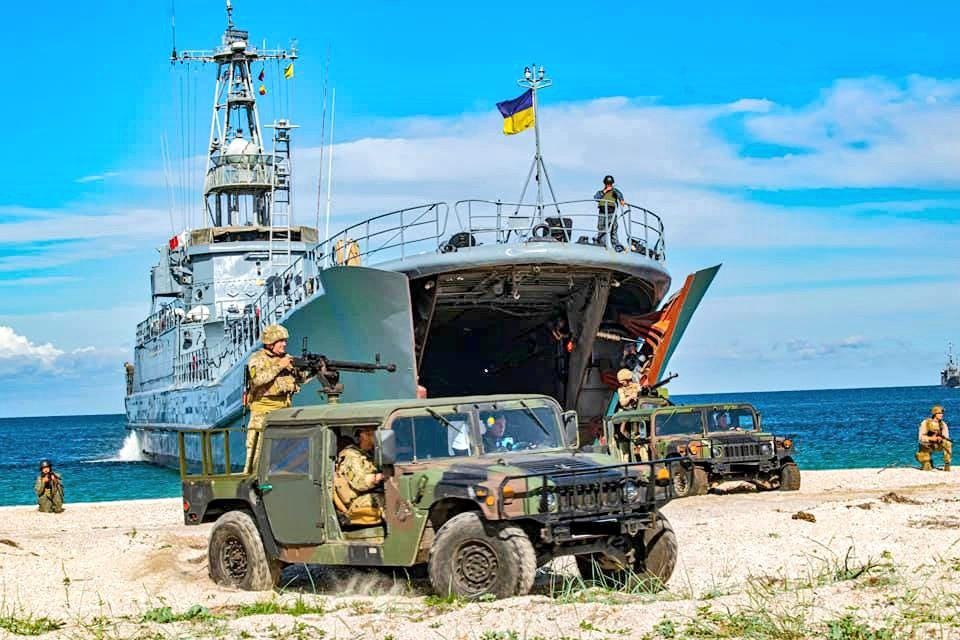
It’s a Polnocny-C with these specs: 12 BMP-2 armored personnel carriers, or 4 Main Battle Tanks, or 250 Infantry Soldiers with their weapons, or 250 tons of rations and stores. Its whereabouts are unknown, but it seems to be assaulting Russian naval bases with missiles while dodging Russian counterattacks. It could be used in an operation on the Kinburn Peninsula, which is a sort of Achilles Heel of the whole Dnieper defensive line. The below map incorrectly labels the entire peninsula as the “Spit,” but the spit is just the tip.
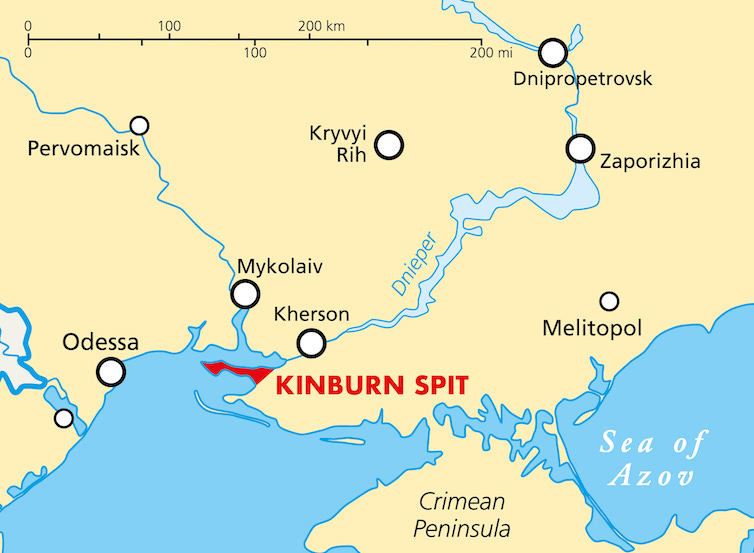
The peninsula is important in keeping the flow of grain open. It can also be used to stage an invasion of the left bank of the Dnieper. Here are some pics of the terrain:
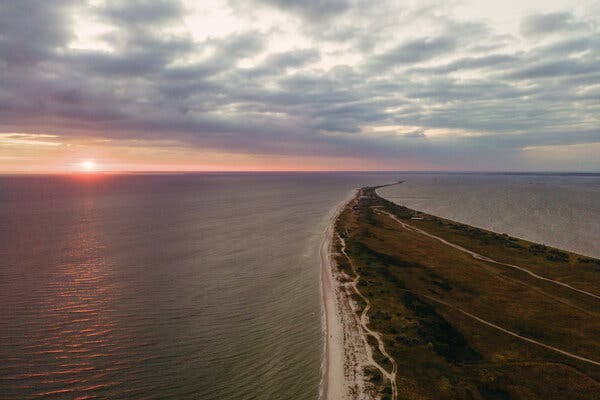
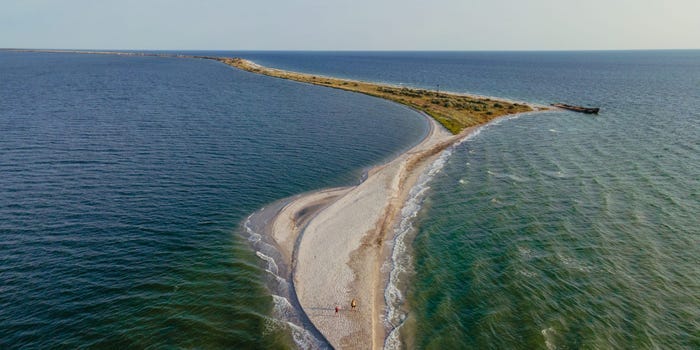
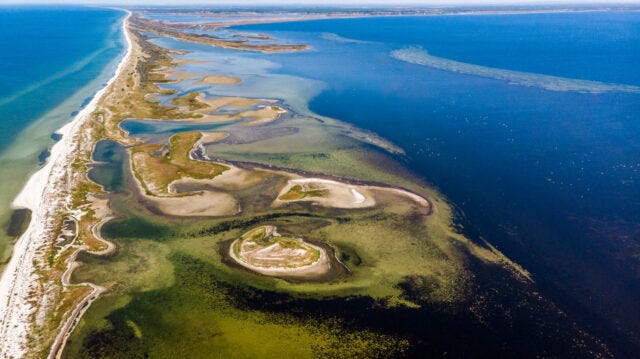
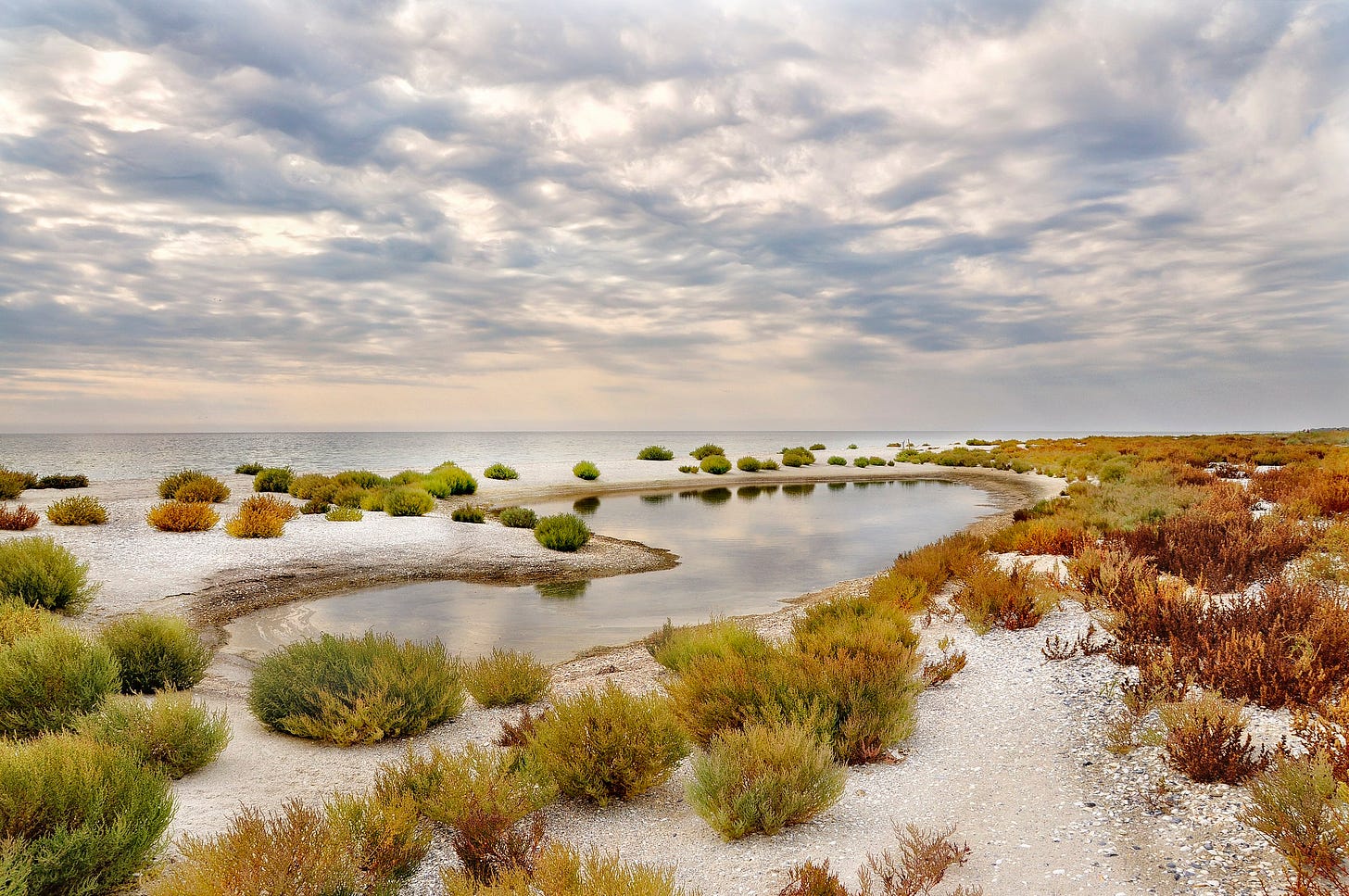
It’s not exactly defensible terrain. Ukraine is certainly capable of occupying it, even using small landing craft. The Russians are allegedly currently occupying it, and being consistently shelled. The Russians allegedly believe that if they leave the spit, the Ukrainians would immediately occupy it. The Ukrainian perspective seems to be that any such occupation would be suicidal. It’s unclear exactly what the status of hte spit is. Either way, save a massive amphibious landing, or something extraordinarily devious in concert with another attack across the Dnieper, it seems unlikely that this terrain could realistically be used to threaten Crimea, as many media articles fantasize about.
Finally, there is one more possibility we must look at, which is the possibility of Belarus entering the war.
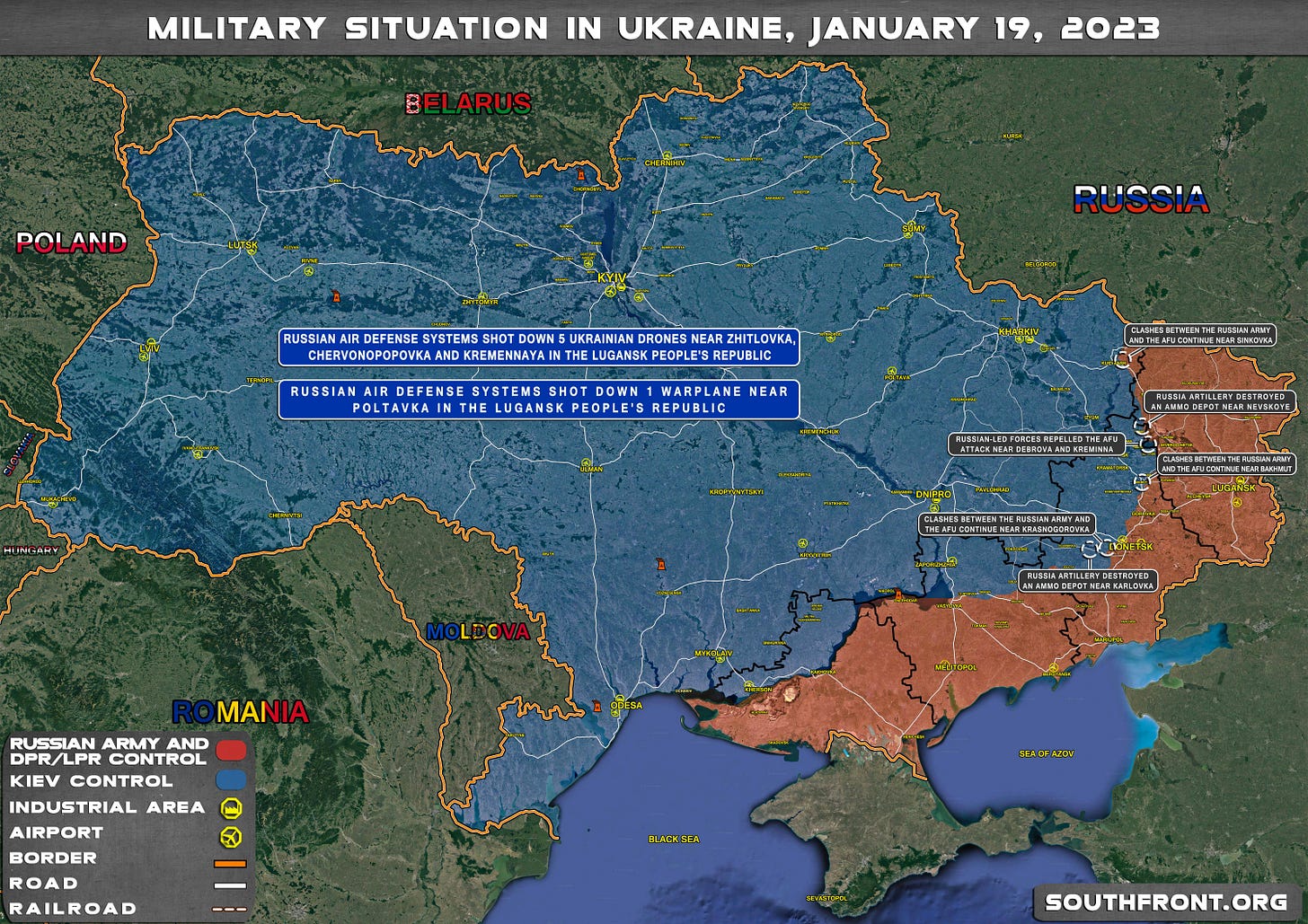
I regard this as extremely unlikely and mostly just click-baiting from various sources. A Belarusian front would double the size of the current front. While this would force Ukrainians to split their army, they would probably end up invading Belarus and overthrowing the government. Belarus would sandbag Russia like Germany’s allies in the World Wars. The Ukrainians seem willing to ignore Belarus’s role as a staging ground for the initial invasion and continued air attacks. Kiev is quite a long distance from Belarus, as you can see in relation to the current front, and is no doubt now heavily fortified. Additionally, Poland could very easily supply the Ukrainians in a war involving Belarus. If Russian forces are massed in Belarus at all, it is probably simply to keep the threat open, and force at least some Ukrainian soldiers into a defensive position around Kiev. You might wonder why not put them on active fronts, but the reality of modern war is that packing an area with troops only results in more casualties. Russia’s newly mobilized forces will not be used in some mass-man attack. Instead, it is preparation for a war expected to last into 2024, 2025, or beyond.
I see 2023 being the year of Donetsk for Russia, setting themselves up to conquer Kramatorsk and Slavyansk in 2024. 2024 will bring a general advance in Donetsk and Zaporizhzhia, and it will not be until 2025 that Russia once again crosses the Dnieper to seal their annexation. Things could go longer, but I think this is the shortest reasonable timeline that the war could go one for.
Here are some charts and figures from 2021 I have on hand that leads me to believe that Ukraine has little chance of winning the war.
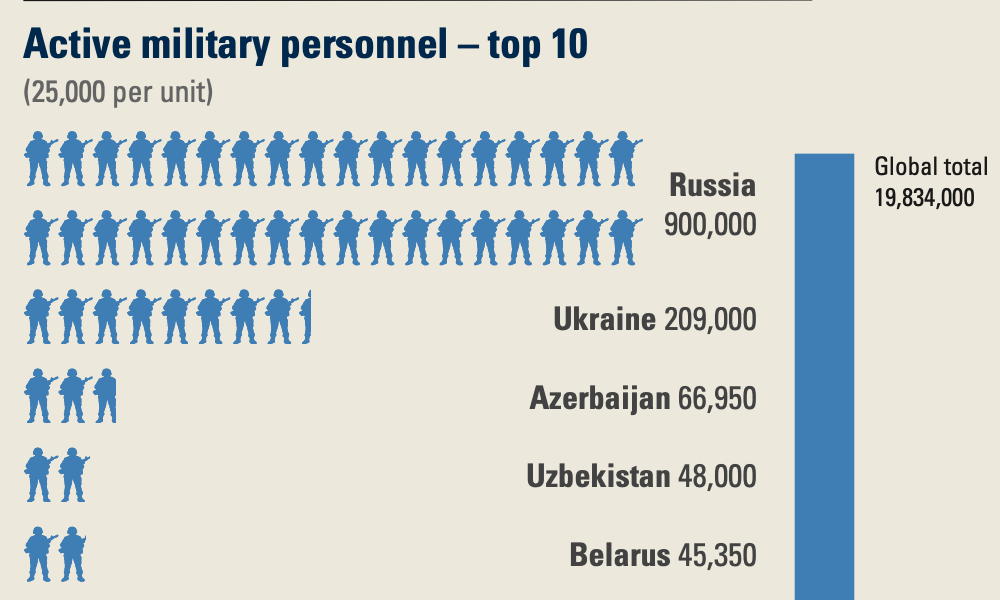
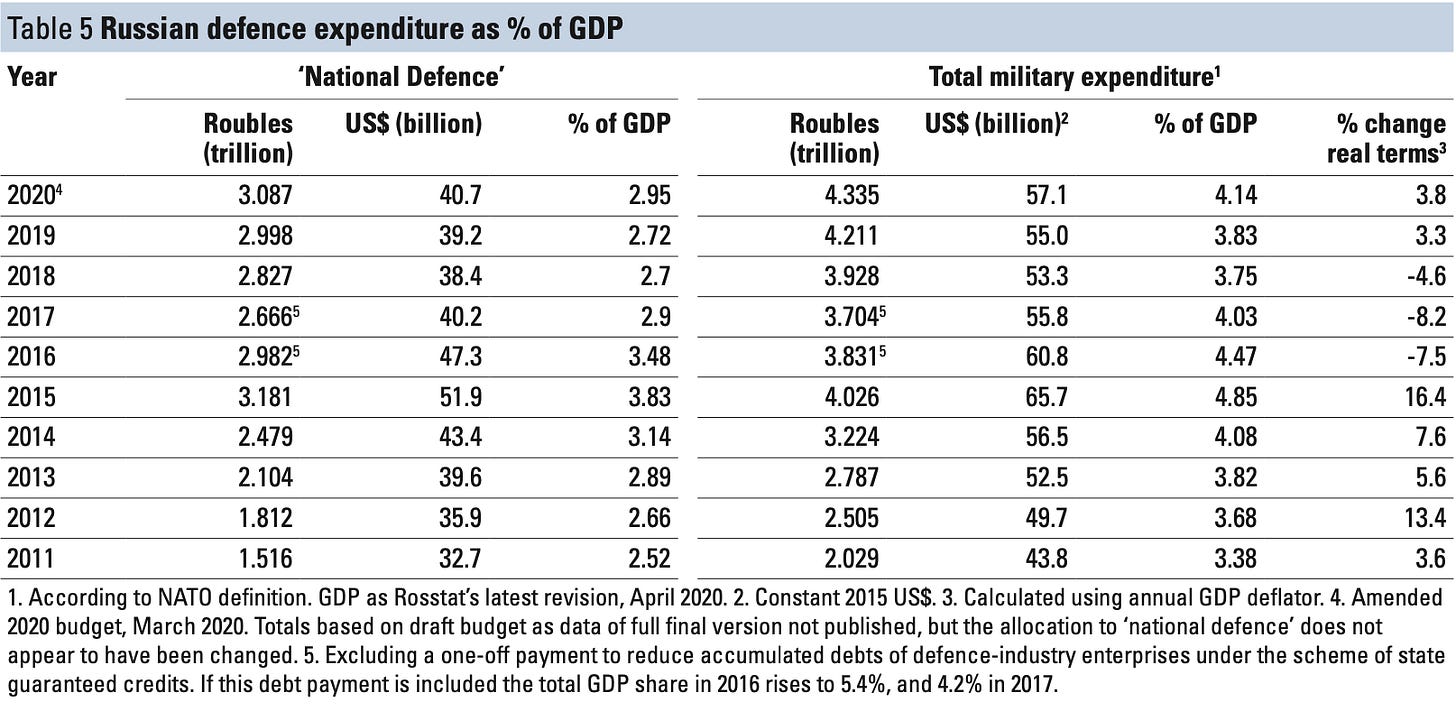
Russia:

Active Personnel: 900,000 (Army 280,000 Navy 150,000 Air 165,000 Strategic Rocket Force 50,000 Airborne 45,000 Special Operations Forces 1,000 Railway Forces 29,000 Command and Support 180,000) Paramilitary 554,000
Conscript liability 12 months (conscripts now can opt for contract service immediately, which entails a 24-month contract)
Reserve: 2,000,000 (all arms)
Some 2,000,000 with service within last 5 years; reserve obligation to age 50
Ukraine:

Active Personnel: 209,000 (Army 145,000 Navy 11,000 Air Force 45,000 Airborne 8,000 Special Operations Forces n.k.) Paramilitary 102,000
Conscript liability Army, Air Force 18 months, Navy 2 years. Minimum age for conscription raised from 18 to 20 in 2015
Reserve: 900,000 (Joint 900,000) Military service within 5 years
I also have estimates for Donetsk and Luhansk:
Donetsk People’s Republic: ~20,000
Luhansk People’s Republic: ~14,000
The Ukrainians on both sides have mobilized significantly. Russia has far more personnel, although it also has far more military obligations in other parts of the world. Russia is also capable of ramping up its military spending beyond where it was before the war started. These numbers help relate the foreign aid sent to Ukraine to Russia’s budget. The Council on Foreign Relations gives us these figures for “Bilateral aid to Ukraine between January 24, 2022, and November 20, 2022”
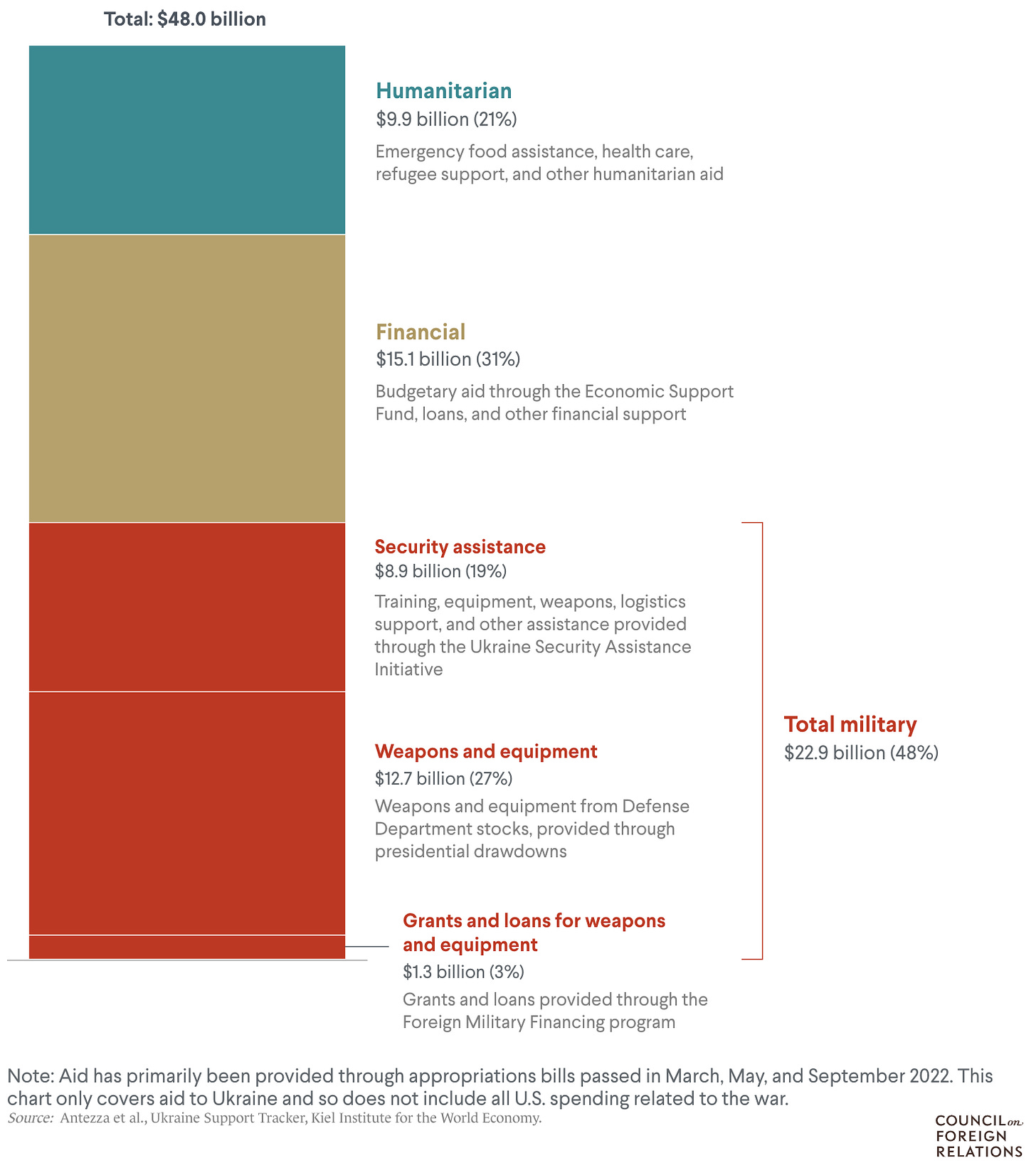
As we can see, about half of the total aid sent has been military aid, to the tune of $30 billion, with Ukraine spending about $3 billion of its own money before the war, a historic peak. Russia, on the other hand, was spending $40 billion before the war, below their peak of $50 billion. These figures are per year. This puts the $45 billion in aid bill currently circulating in Congress.
The U.S. Secretary of State announced similar figures yesterday (January 19th):
“This package, which totals $2.5 billion, will bring total U.S. military assistance for Ukraine to an unprecedented approximately $27.5 billion since the beginning of the Administration.”
The $45 billion in aid that passed the House in December 2022 is broken down like this:
Ukraine Security Assistance Initiative – $9 billion to provide assistance, including training, equipment, weapons, logistics support, supplies and services, salaries and stipends, sustainment, and intelligence support to Ukraine’s military. It also allows the Secretary of Defense to accept contributions from partner nations in support of Ukraine.
Replenishment of US stocks – $11.88 billion to replenish US stocks of equipment sent to Ukraine through Presidential drawdown authority.
European Command operations and related activities – $6.98 billion for mission support, intelligence support, pay, equipment, and related activities.
Humanitarian Assistance – $2.47 billion to address the dire humanitarian needs of Ukraine, refugees from Ukraine, and other vulnerable populations and communities.
Economic Assistance – $13.37 billion in vital economic and budgetary support for the Government of Ukraine, including support for Ukraine’s energy security and other critical infrastructure needs and for assistance to other countries impacted by the situation in Ukraine.
As we can see, only about half of the money directly has anything to do with military spending. Obviously, there are other expenditures at work, and the U.S. Dollar will go further than Russian Roubles of equivalent value, purely through economies of scale and better technology. But, the U.S. is not vastly outspending Russia in the war, despite what some may believe.
To conclude, let’s look at what the media is saying about Bakhmut, in case you aren’t convinced that Ukraine is not doing so well at the moment. The battle for Bakhmut is a microcosm of the entire war, and what is happening there tells us a lot of about how the war is progressing.
Just today (January 20th), Der Spiegel reported that the German foreign intelligence service estimated that Ukraine is losing a “three-digit number of soldiers” daily. They also report that Bakhmut is a strategically important city. In contrast, the Washington Post writes this nonsense about Bakhmut: it is “a city that many military analysts view as having relatively little strategic significance to the broader battlefield, but which has become freighted with political symbolism for both sides.”
The is obvious nonsense. Bakhmut is the key to the rest of the Donetsk. The media is probably downplaying Bakhmut’s importance because it is becoming increasingly obvious that its days are numbered.
The surrounding text makes things more clear:
“The Ukrainian military must now decide how many more forces and how much more ammunition and weaponry it can expend to continue defending Bakhmut — a city that many military analysts view as having relatively little strategic significance to the broader battlefield, but which has become freighted with political symbolism for both sides.
The decisions come as Ukrainian officials — awaiting an influx of new armored vehicles promised by the United States, France and Germany — say they are preparing to launch a new counteroffensive in the coming months to try to wrest back more territory from the Russians. Success in that campaign would be critical for President Volodymyr Zelensky to demonstrate continued momentum on the battlefield and retain domestic and international support in a war now in its eleventh month.”
It is clear that the opinion is that Bakhmut ought to be given up, and the resources used in further counteroffensives. The sober mood of the media, as opposed the triumphalism of stories about Russian casualties in December, demonstrates well the realities of the development of this battle and the war.